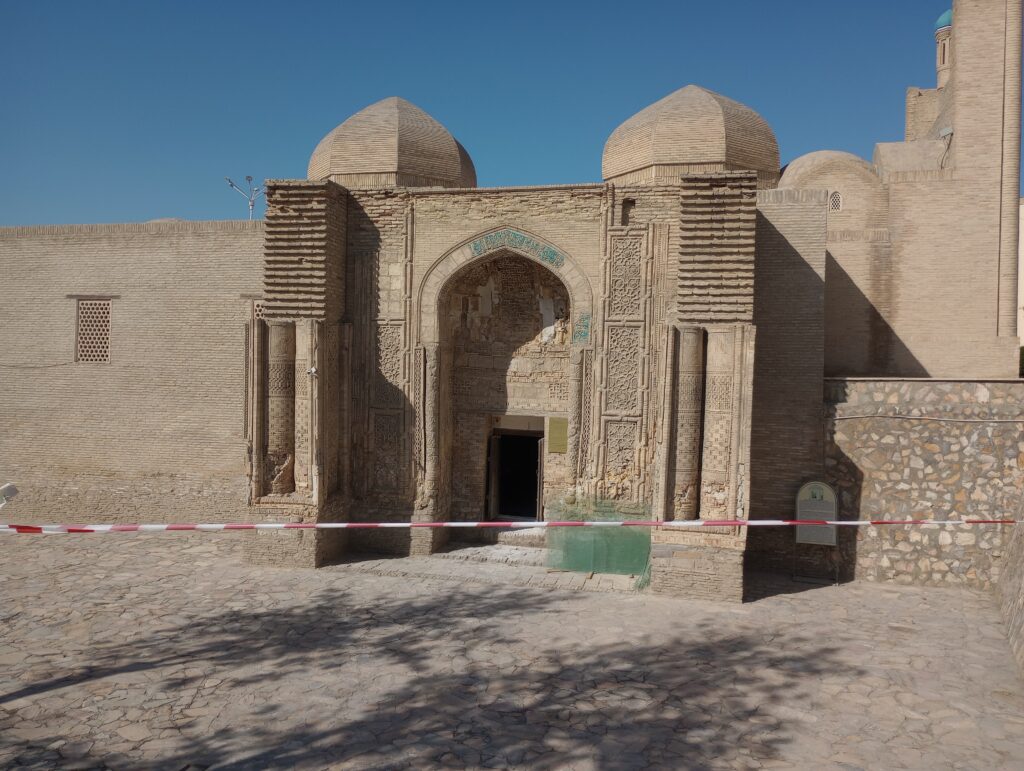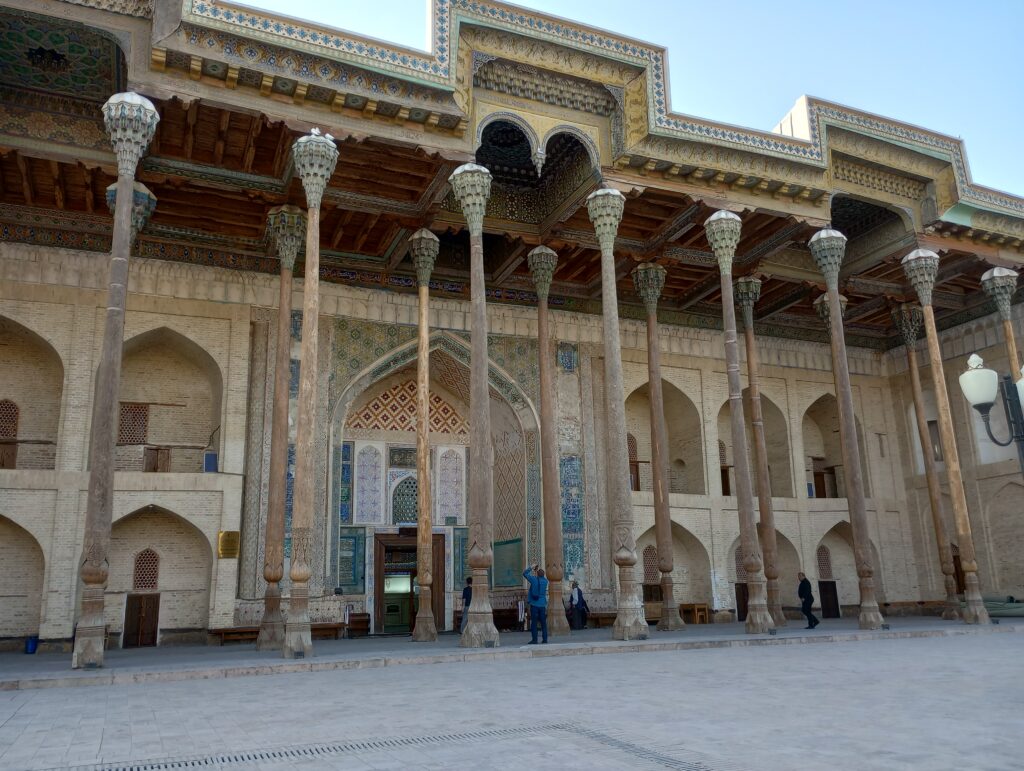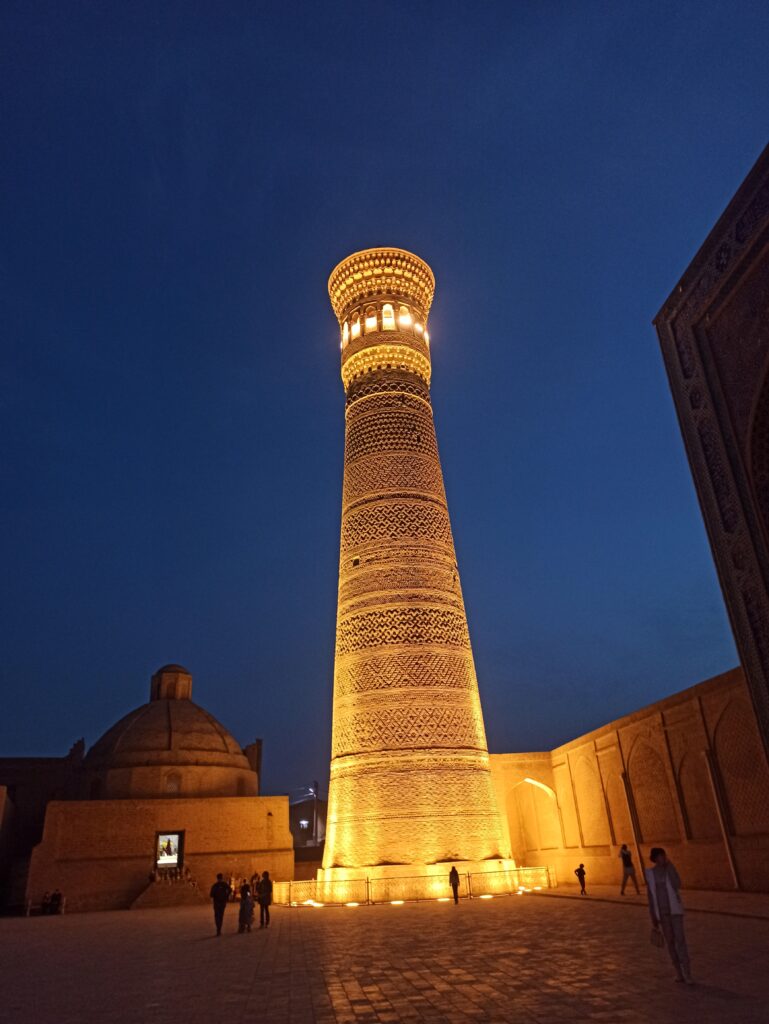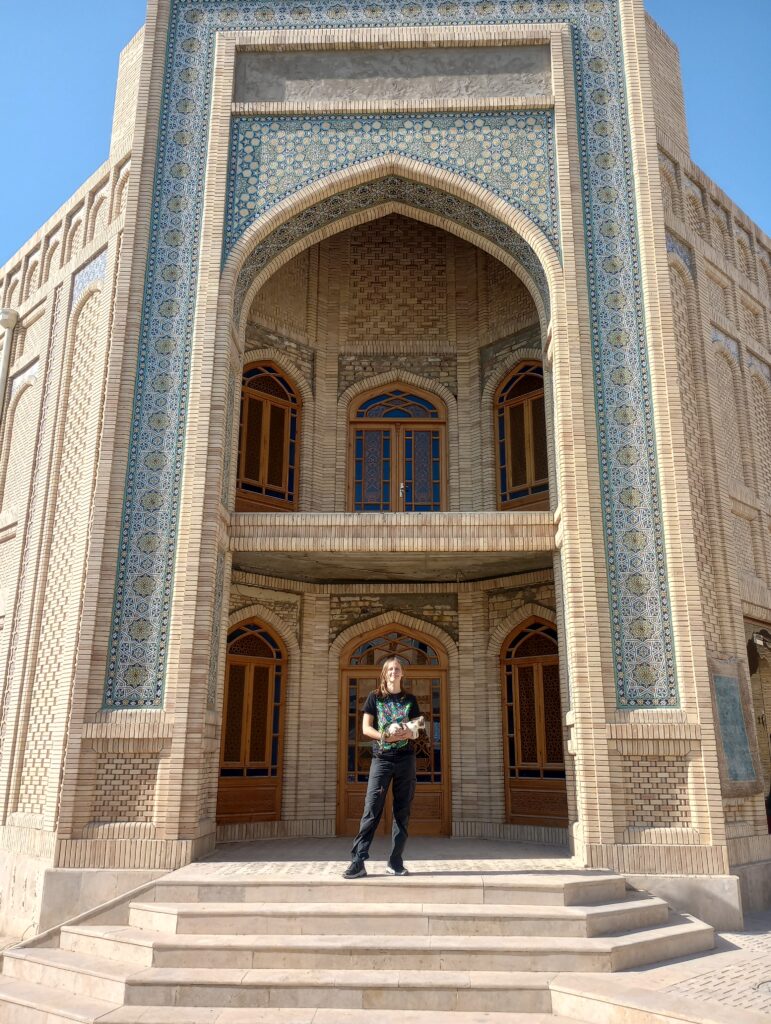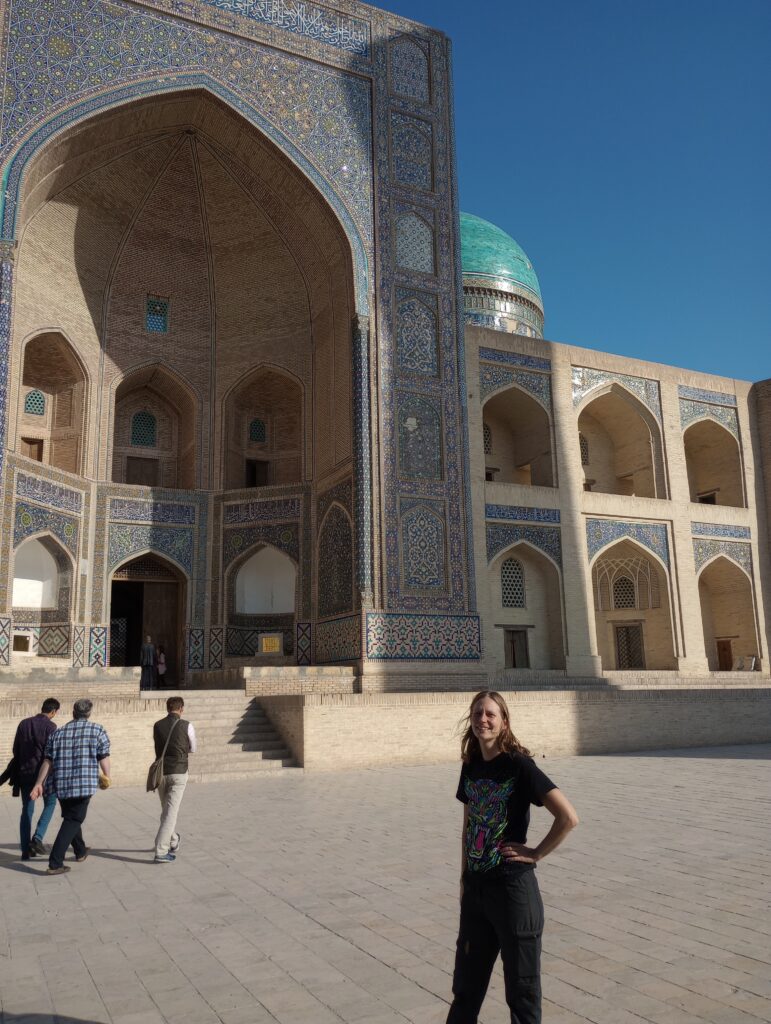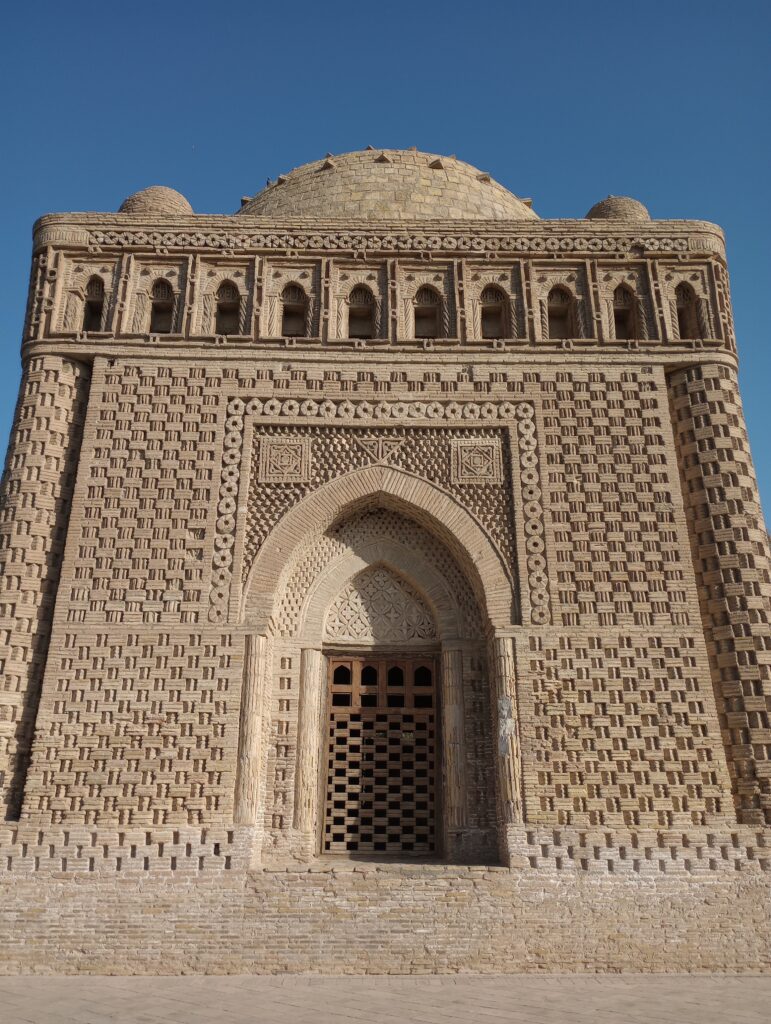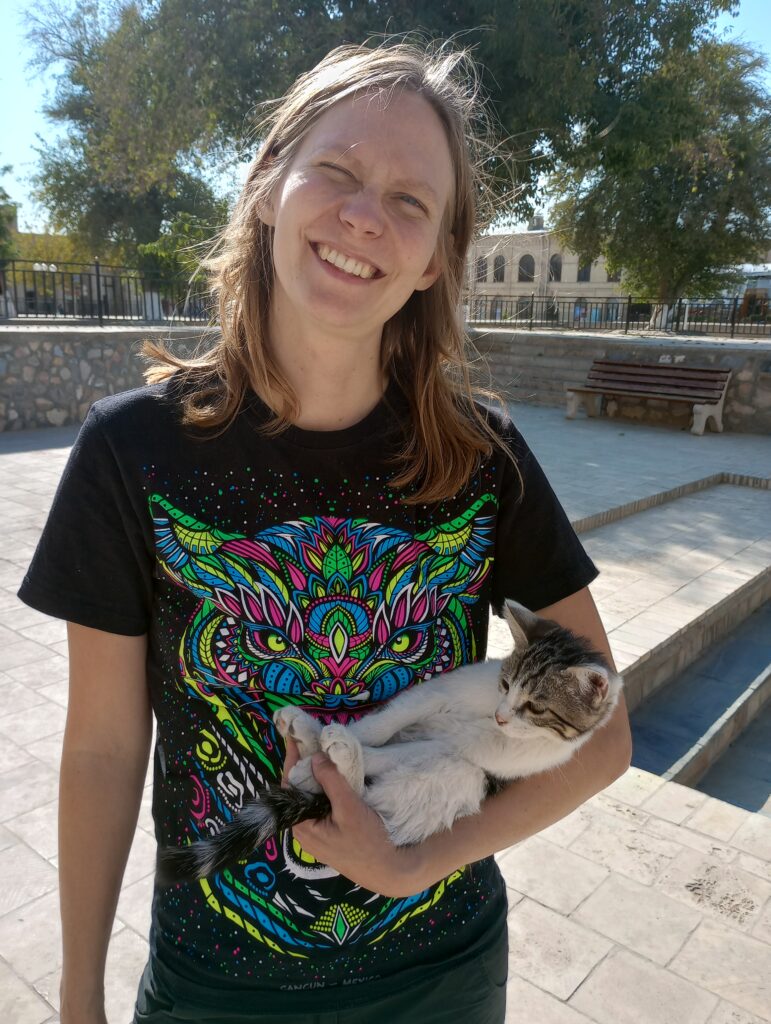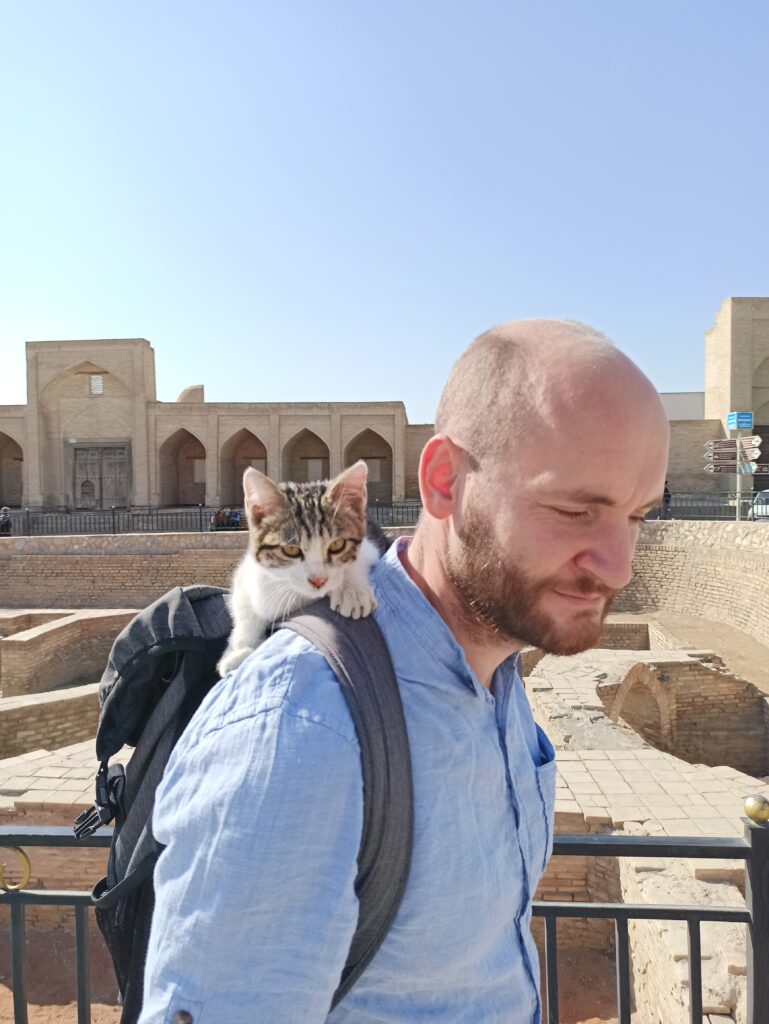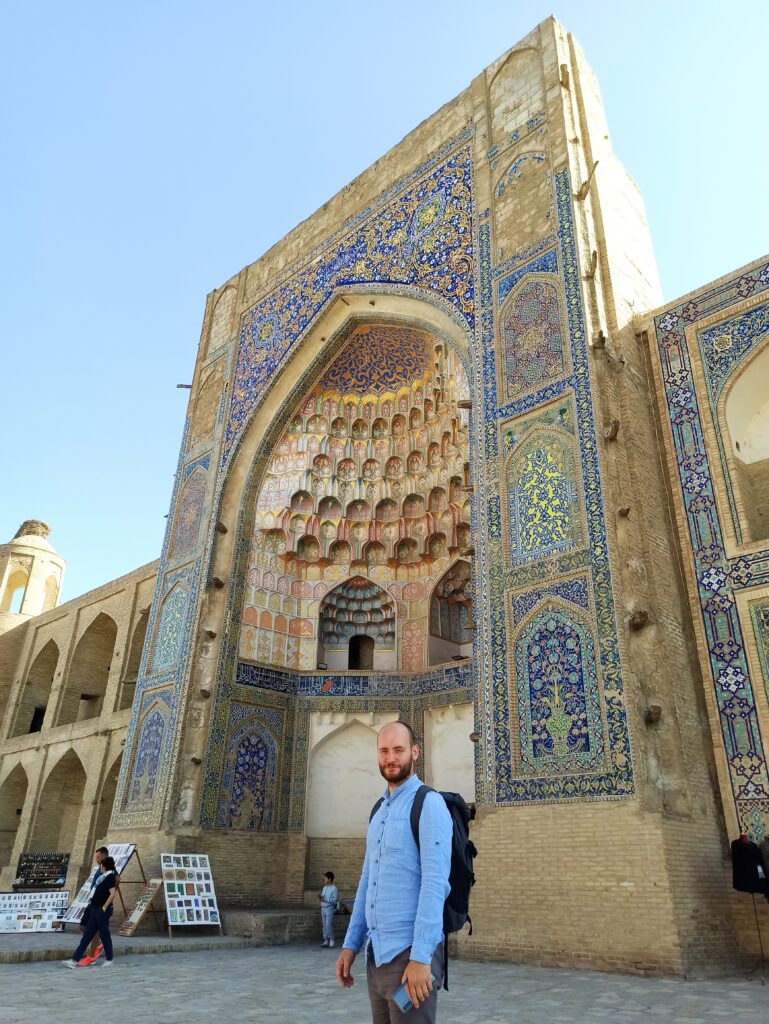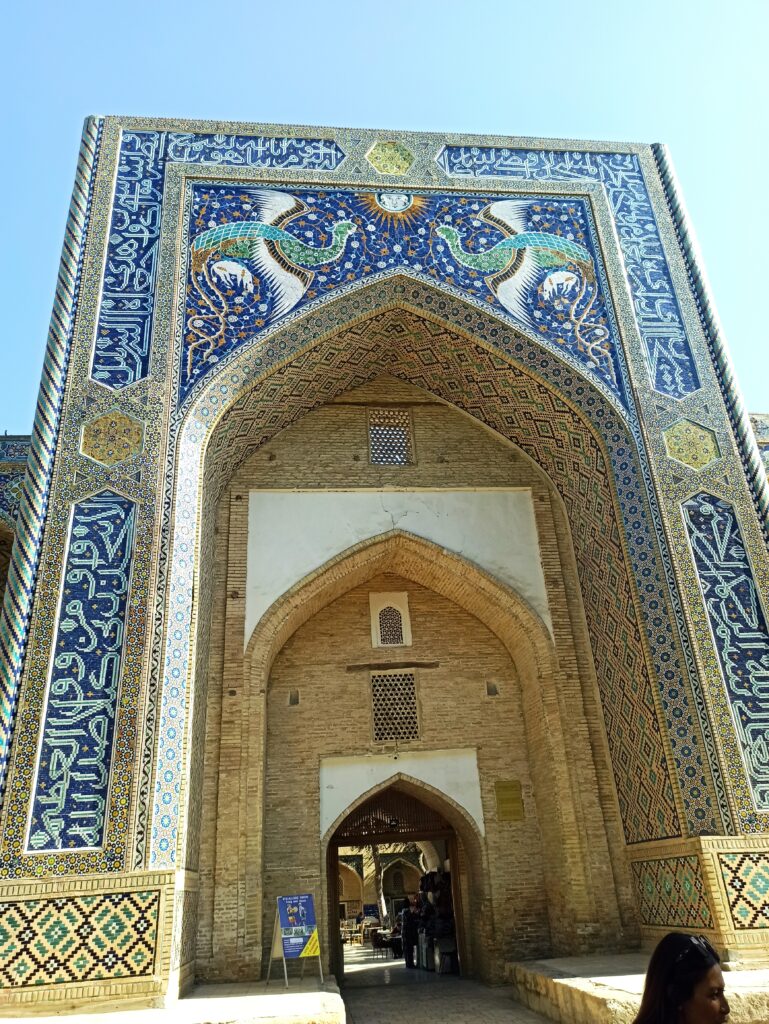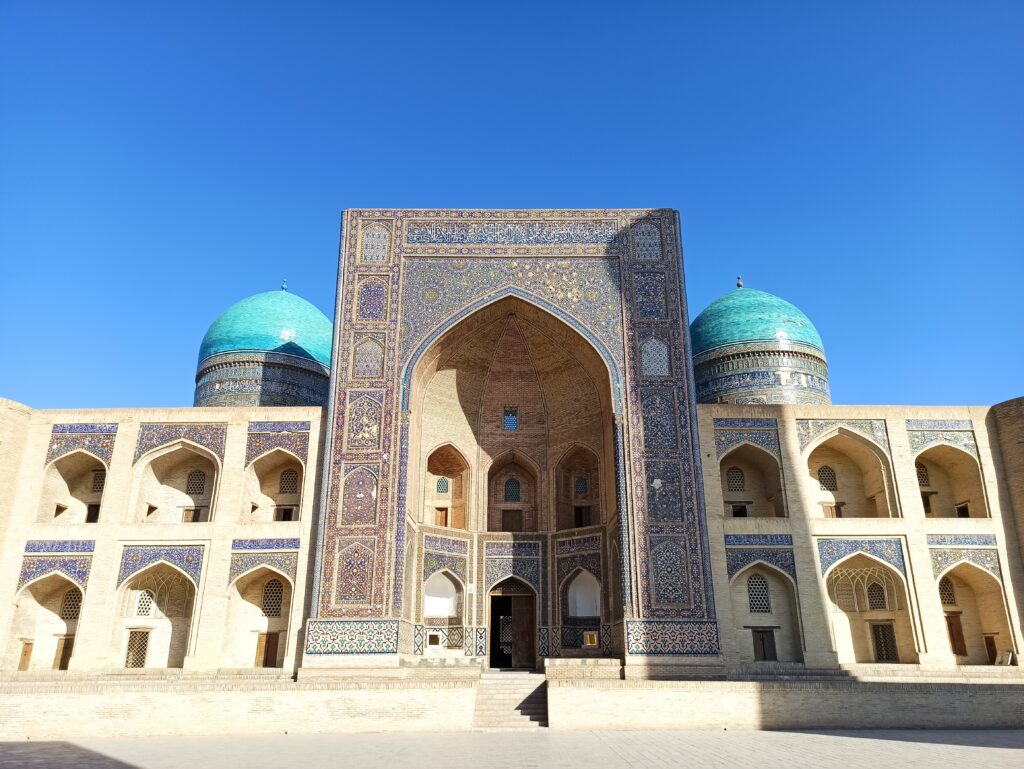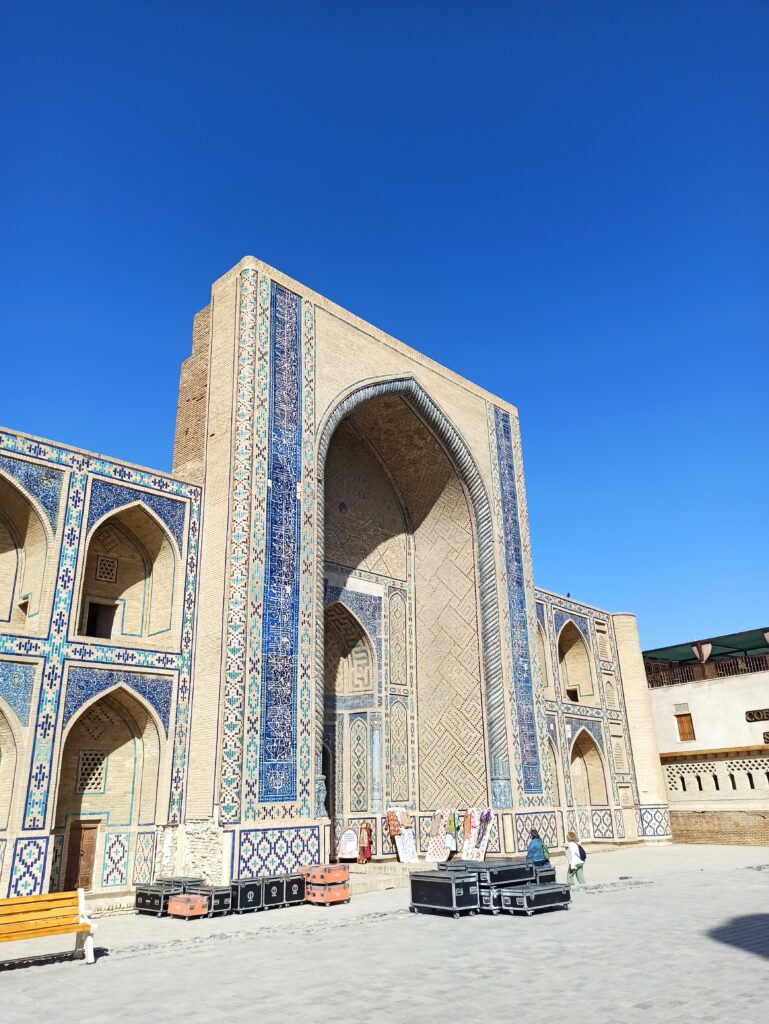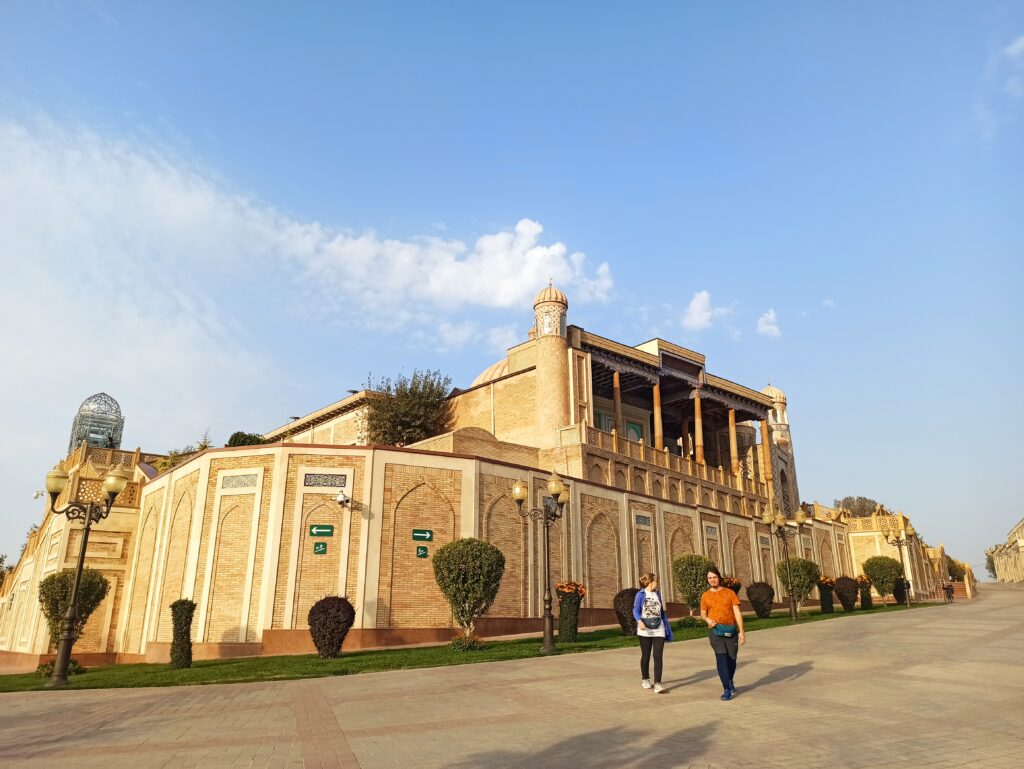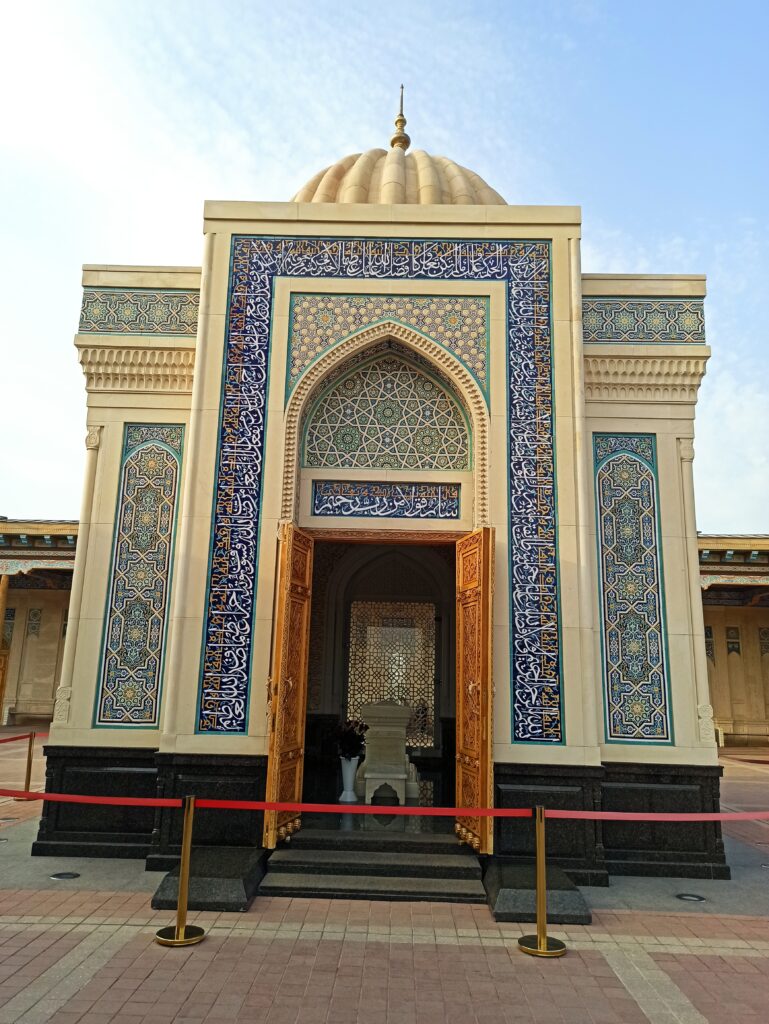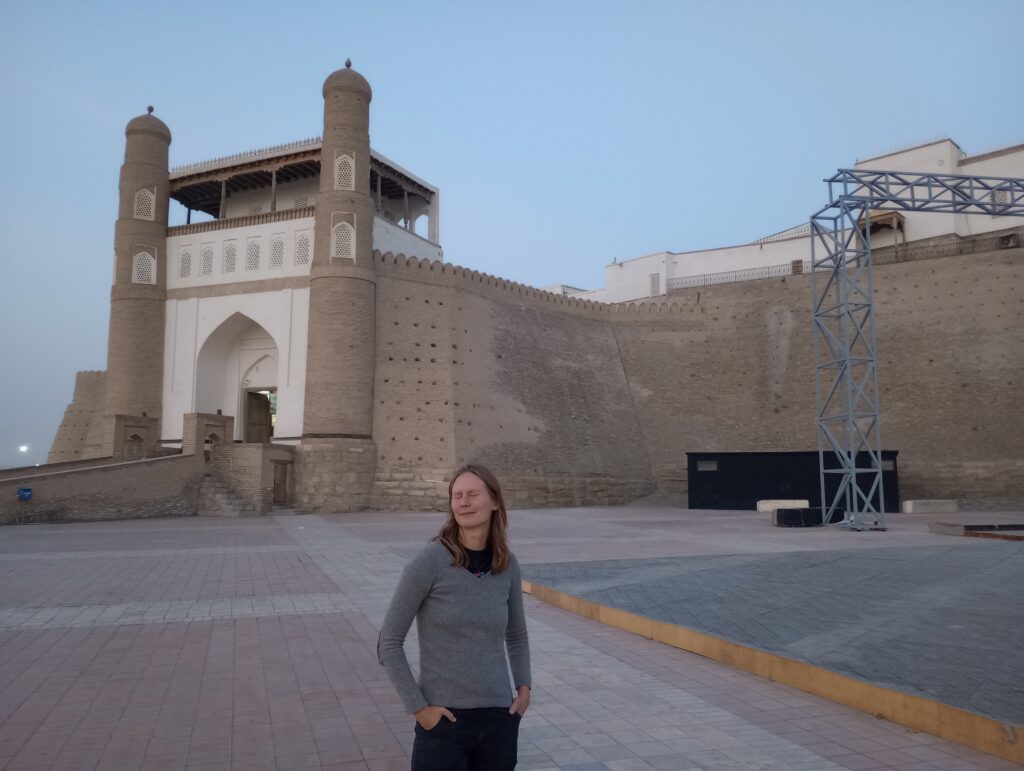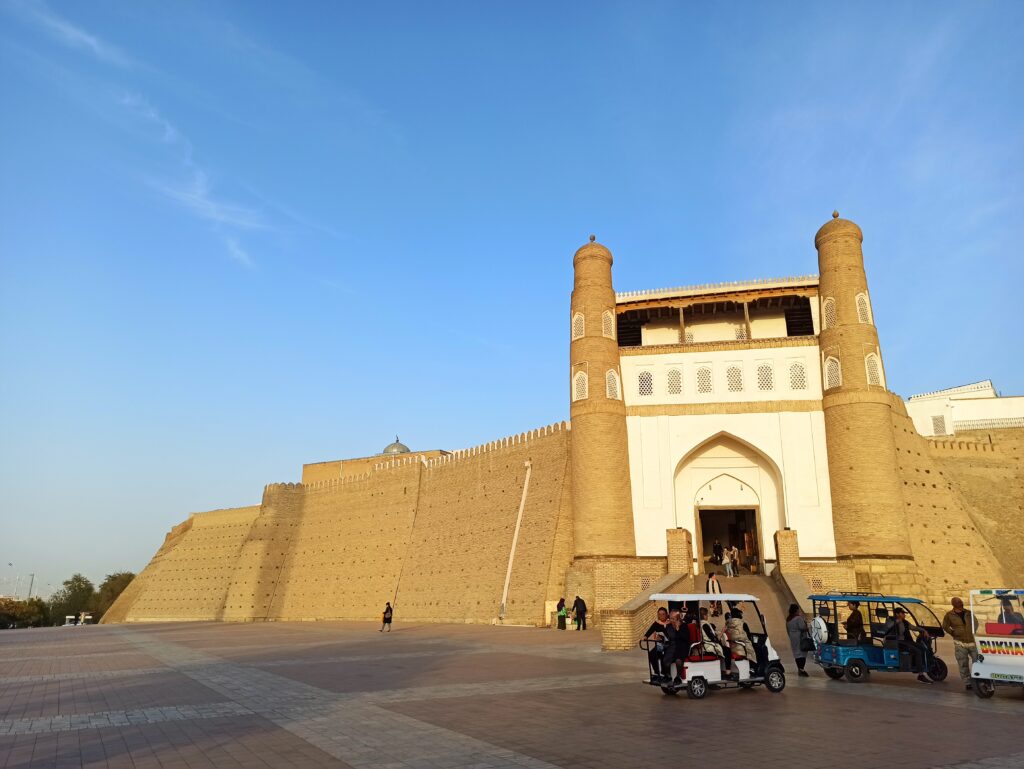The main reason people go to Uzbekistan is for the history. You go to Kyrgyzstan for the horses, to Tajikstan for the people, to Kazakstan for- I don’t know, but if you want grand buildings and stunning history, then Uzbekistan’s got you.
The perhaps most prominent town is Samarkand. It is known because Amir Timur, a guy who was a war for 40 years of his life and pretty much conquered everyone and everything within reach, and that included parts of Europe and all of Persia, is buried here, as are his kin. The mausoleum is large and beautiful, and somewhat wasted on a dead person, or so I thought.
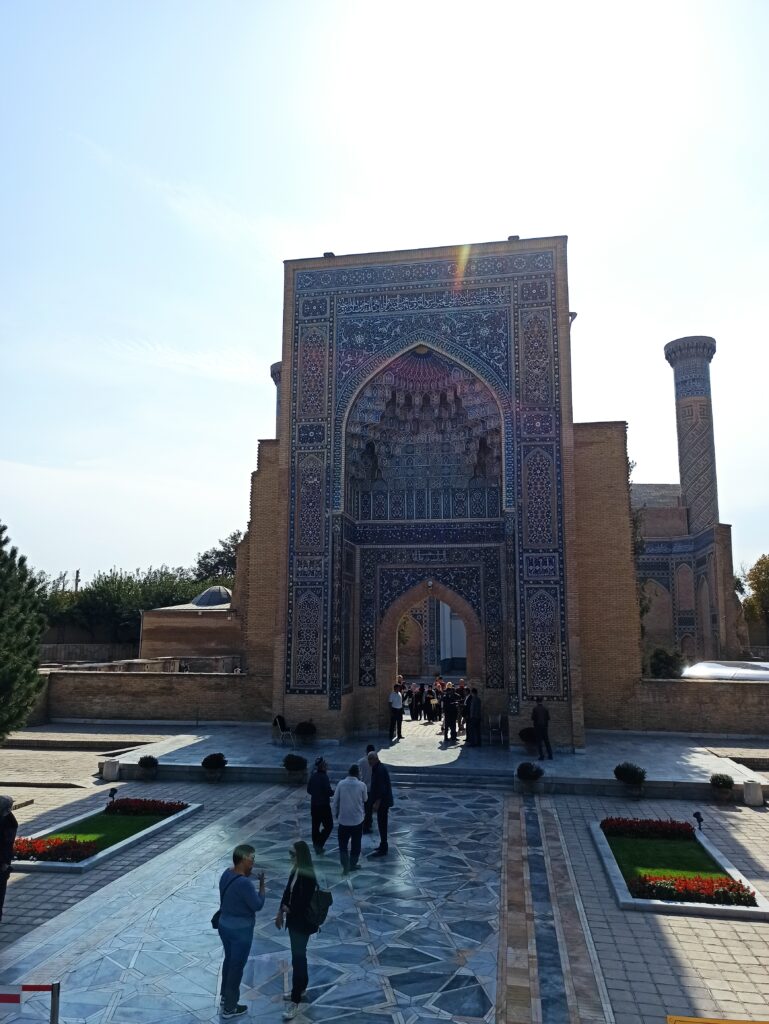
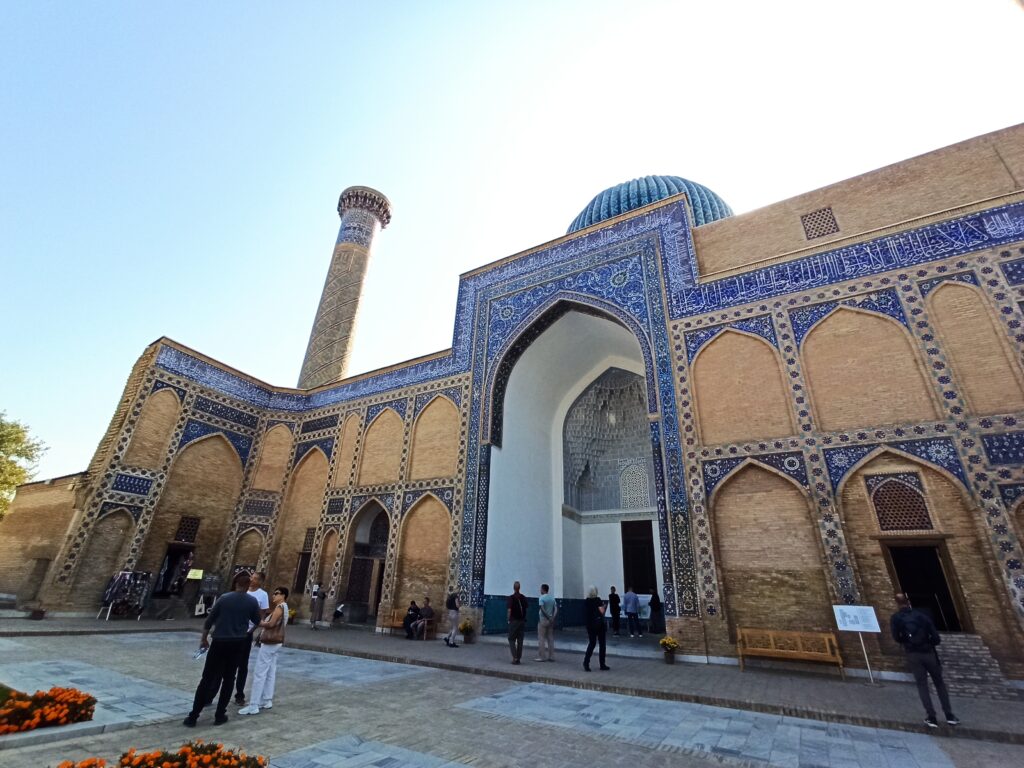
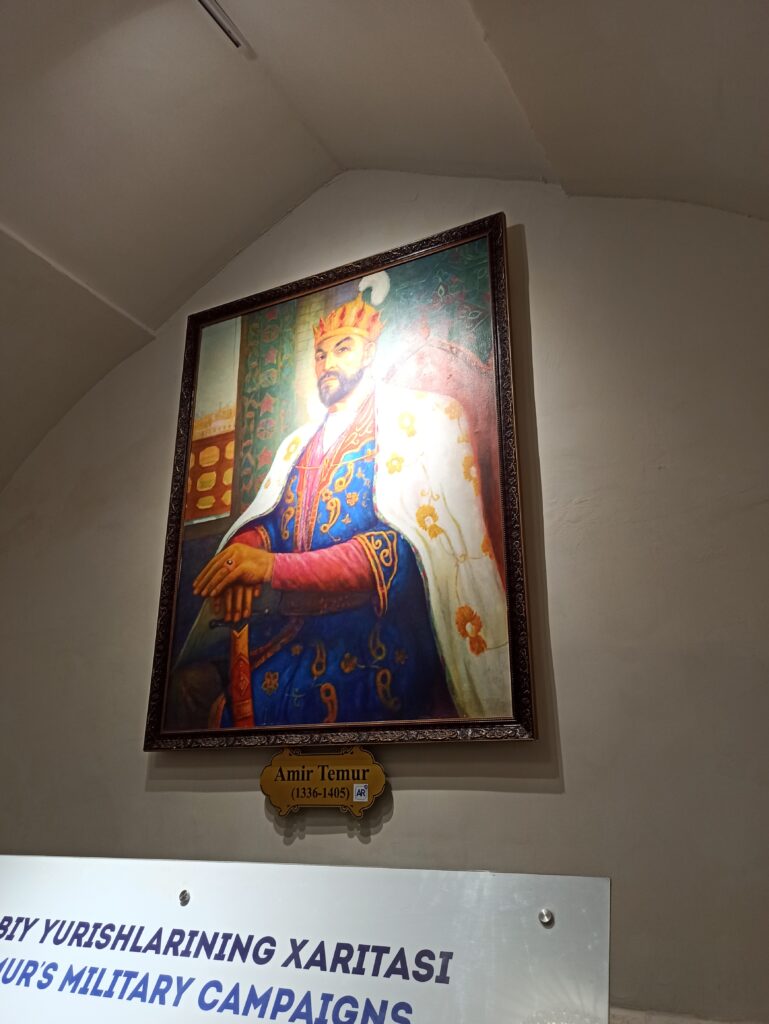
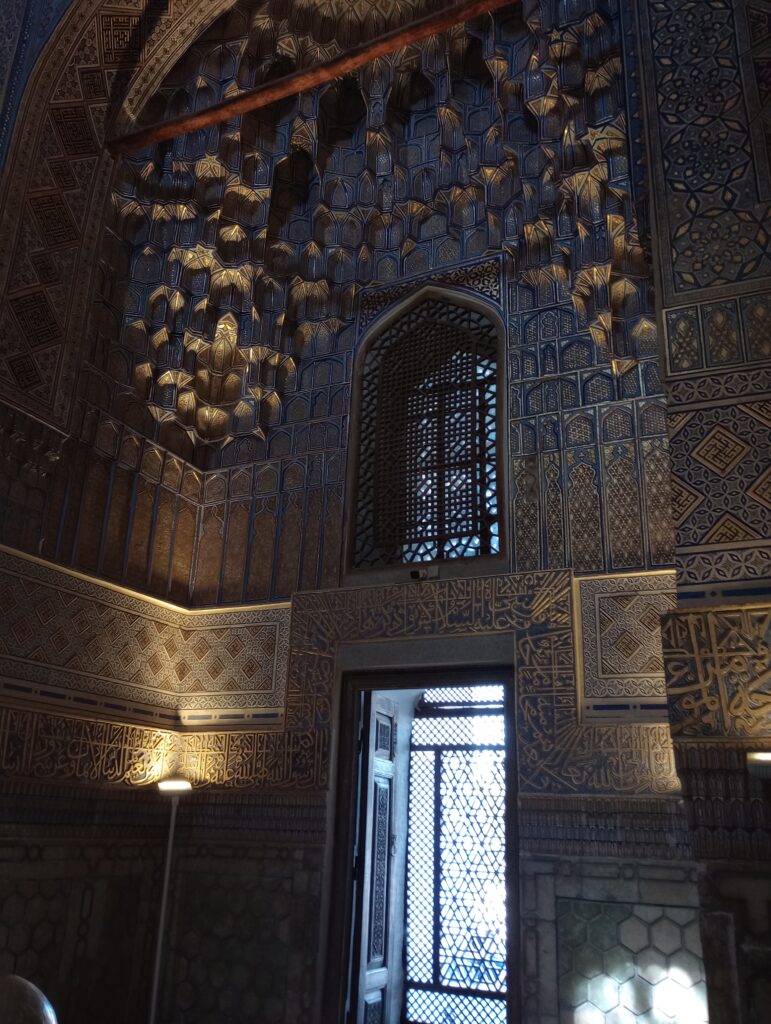
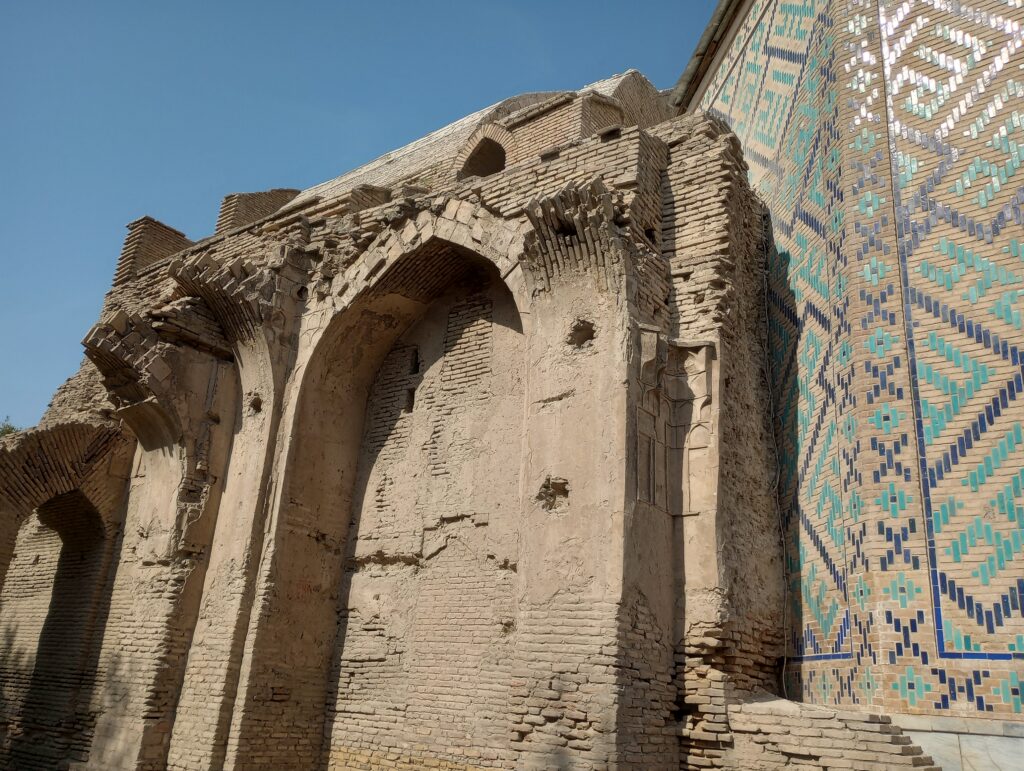
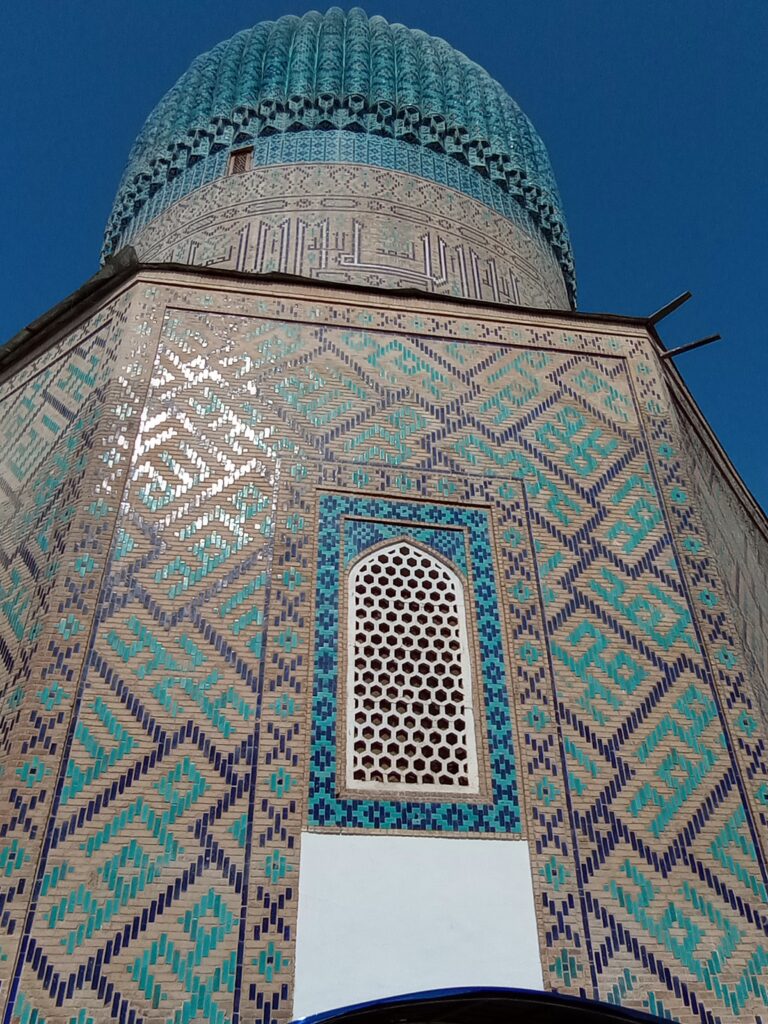
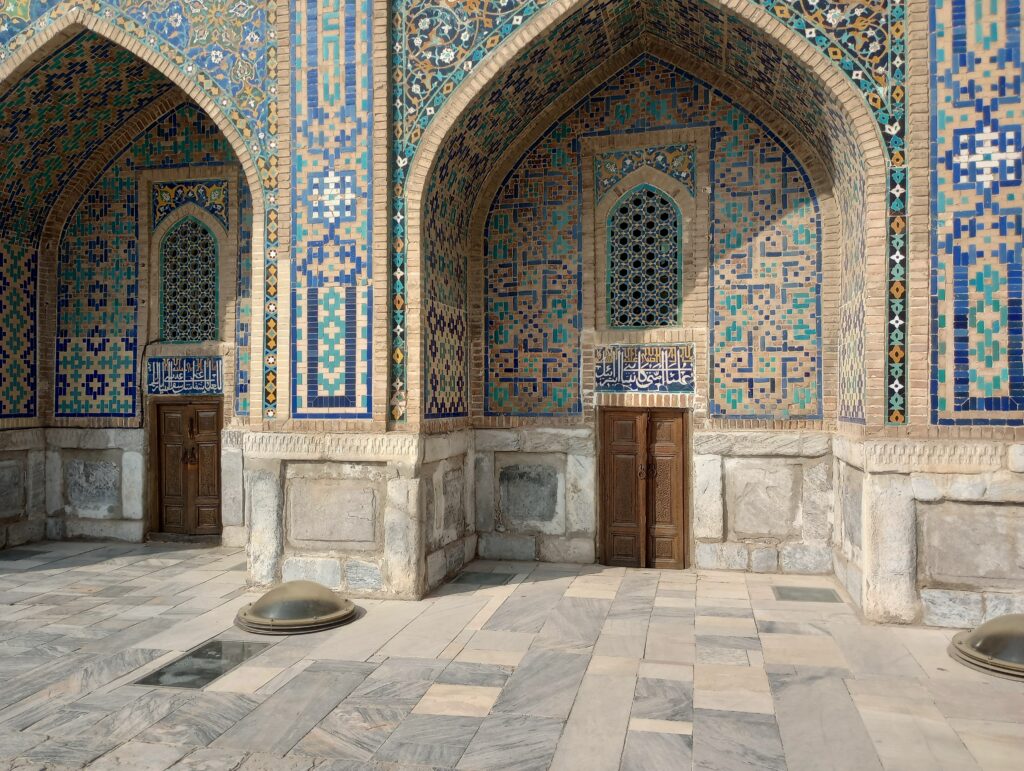
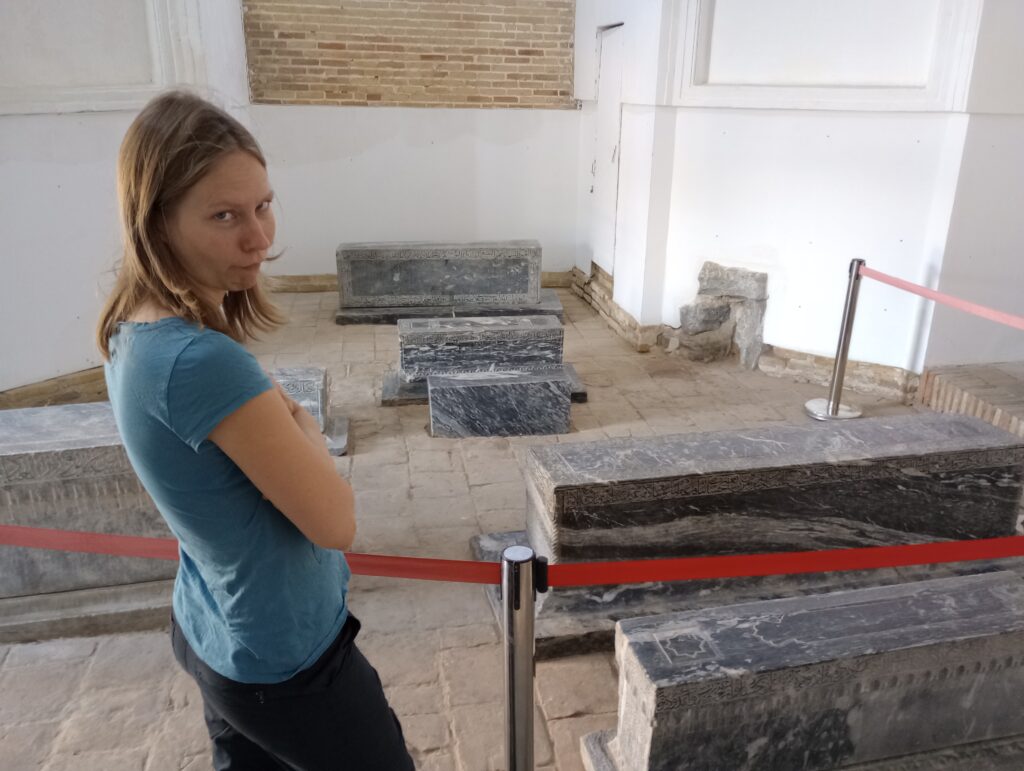
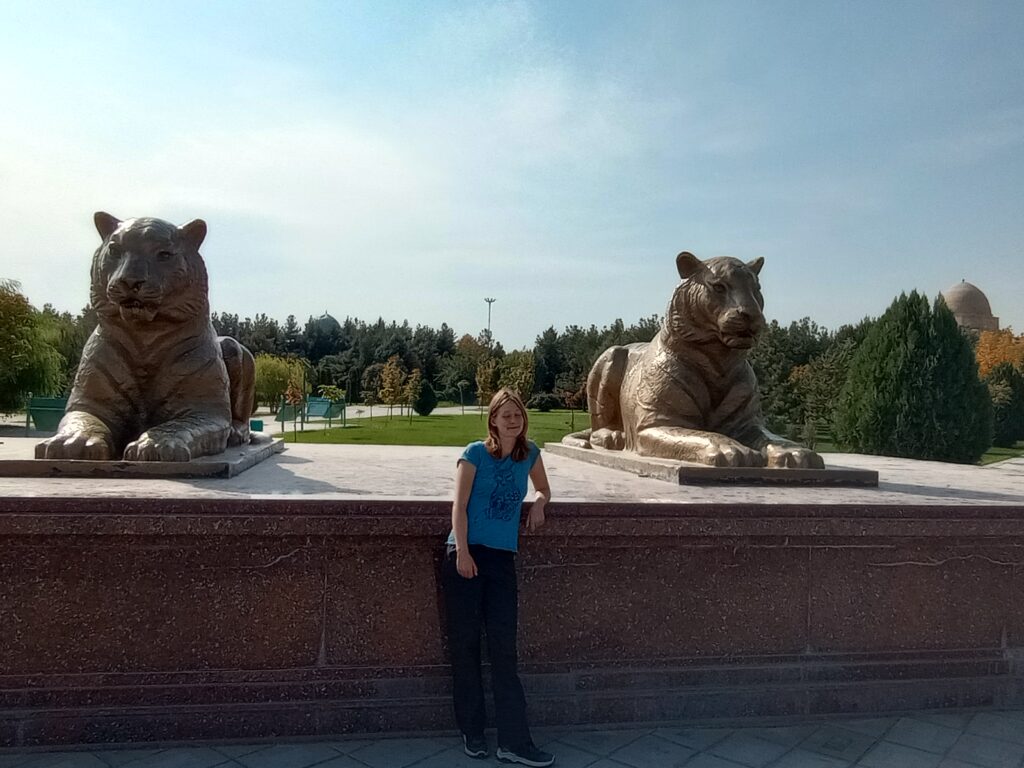
Except for mausoleums and mosques, the other type of building which is very common in Uzbekistan are madrasses. Let me explain. A madras is a universtiy, or a house of learning. The 3 main madrasses of Samarkand, which are undoubtedly the most spectacular and aweinspiring buildings we have seen on our trip, were built by the grandson of Amir Timur, Ulugbek. He figured it would do his population good to have as many learned people as possible and so he built these universities. It was the 15th century, and at that time, Central Asia was the heart of the scientific community, especially in manners of astronomy and mathematics.
Basically, behind the monumentous entrance dome, there were a few public rooms in which the students presumably studied. A term lasted from Oktober through February, give or take, and the rest of the time the students were on break. On the inside, there was a courtyard, with the students dorms facing the courtyard. Nowadays it’s all souvenir shops.
How do we know all these tidbits? Well, we had the worst guiding experience of our life. We were stopped by a guide offering her services to us, encouraging us to learn more about the sites, she had been a guide for 20 years, after all. We thought, why not, after all, it’s not like were going to be here again so soon, if ever. She proceeded to take us with here and talk faster than any person I’ve ever met. As she sped from one place to the next, talking nonstop with the most robotic voice I’ve ever heard. In comparison, Siri has a pleasantly modulated and warm tone of voice. There was absolutely no time to linger, or to perhaps take a photo or simply think for more than half a second. Sometimes, if we did linger anyway, she sped off ahead, continously talking and it took her a few seconds until she noticed something was missing. In the end, it cost a fortune, too, about 30 USD. She was a bit miffed, I think, when she demanded feedback, since we didn’t look to happy and we told her it was not quite enjoyable. She told us, now, after the tour was done, was time to enjoy and relax, not before. Alright. So thats what we did and we did the tour again, slower, enjoying the spectacular mosaics and pictures, the geometric art and the vibrant colours. Especially the mosque encased in one of the madrasses was truly beautiful beyond comparison, with gilded blues and whites.
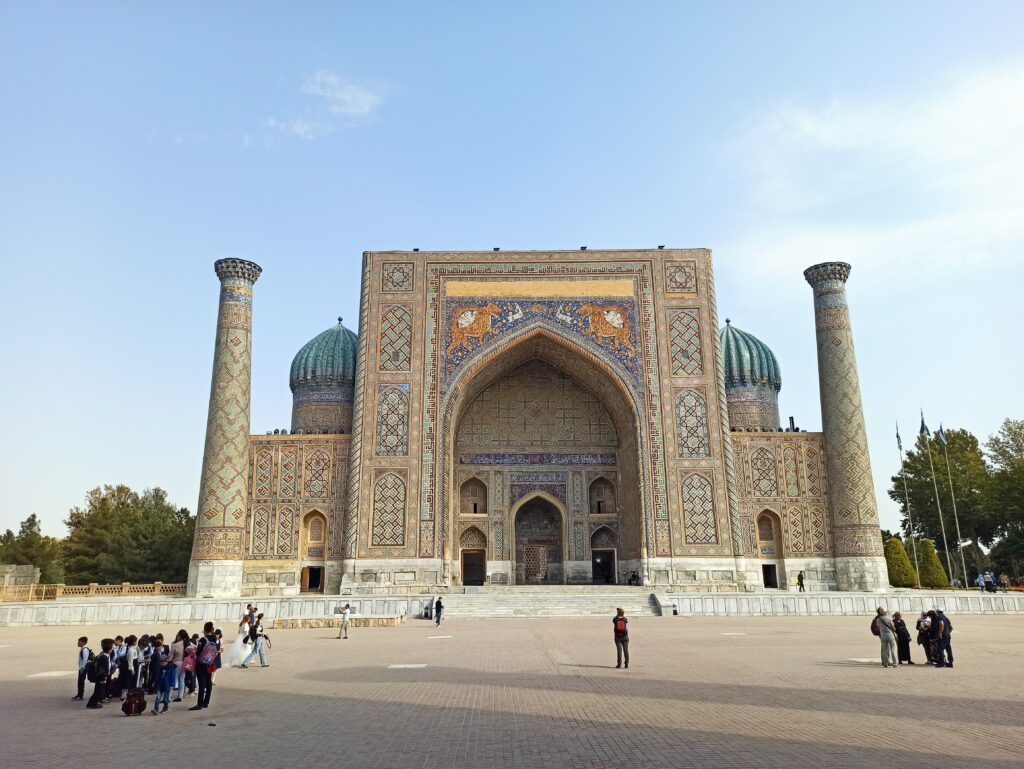
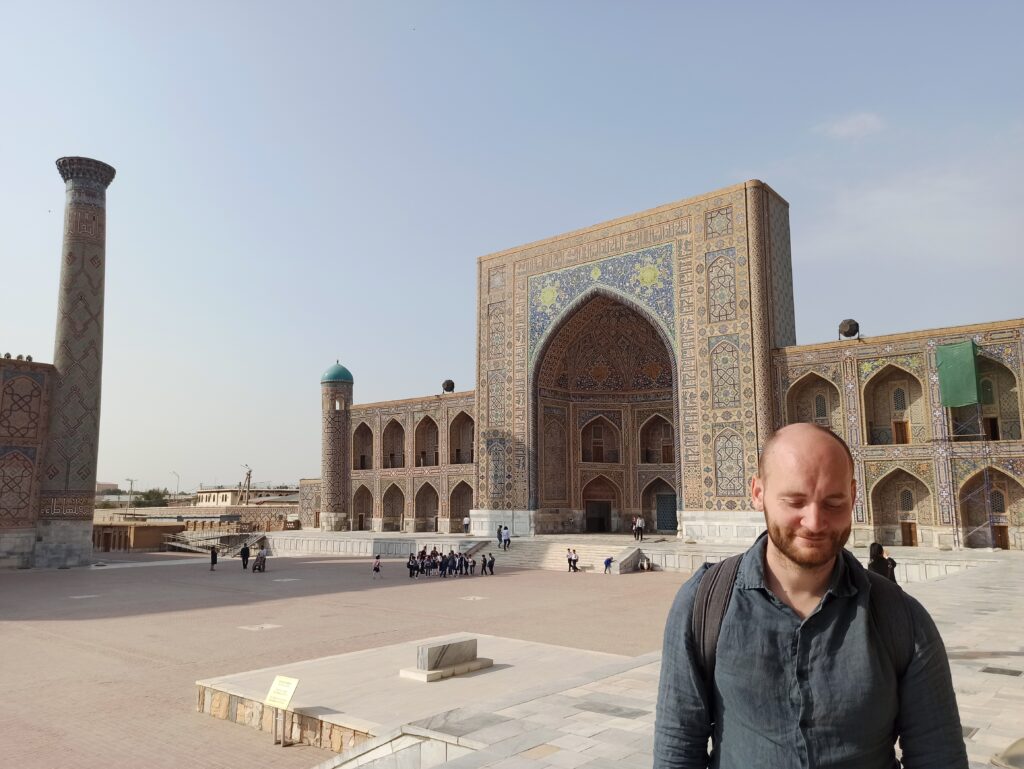
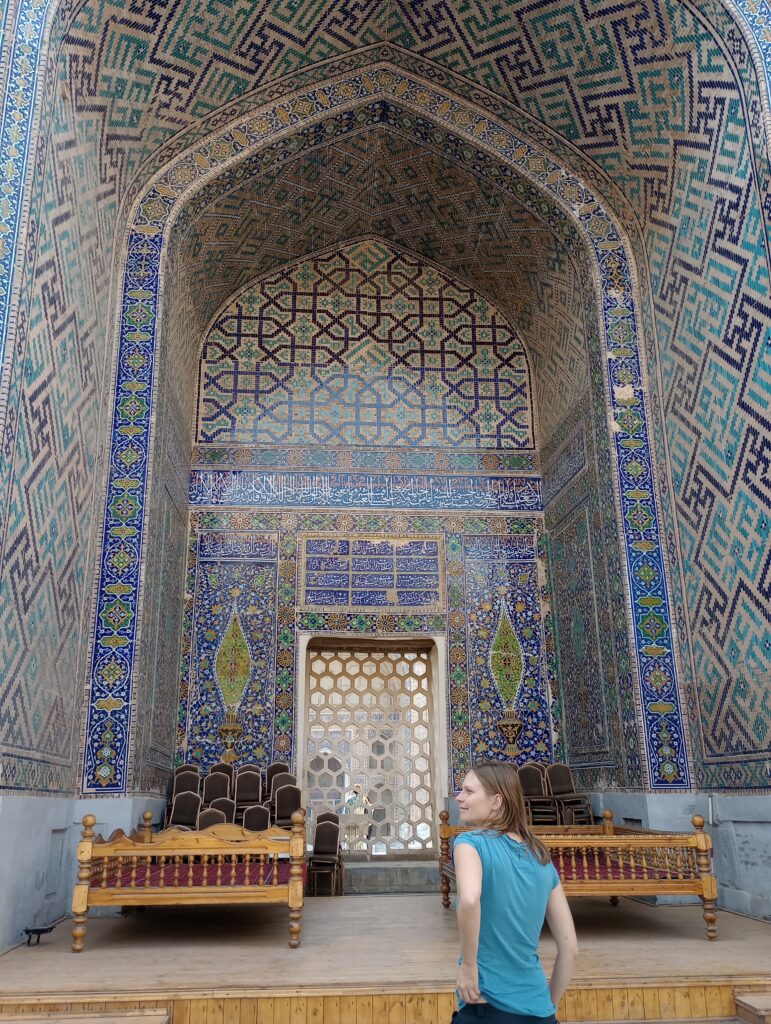
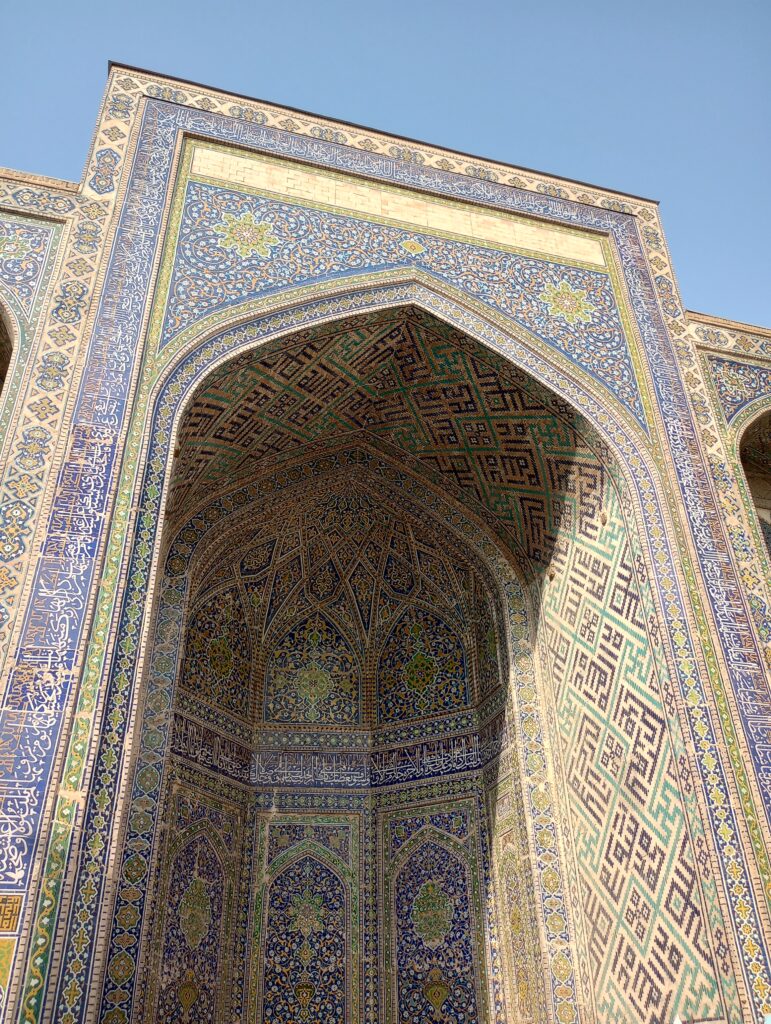
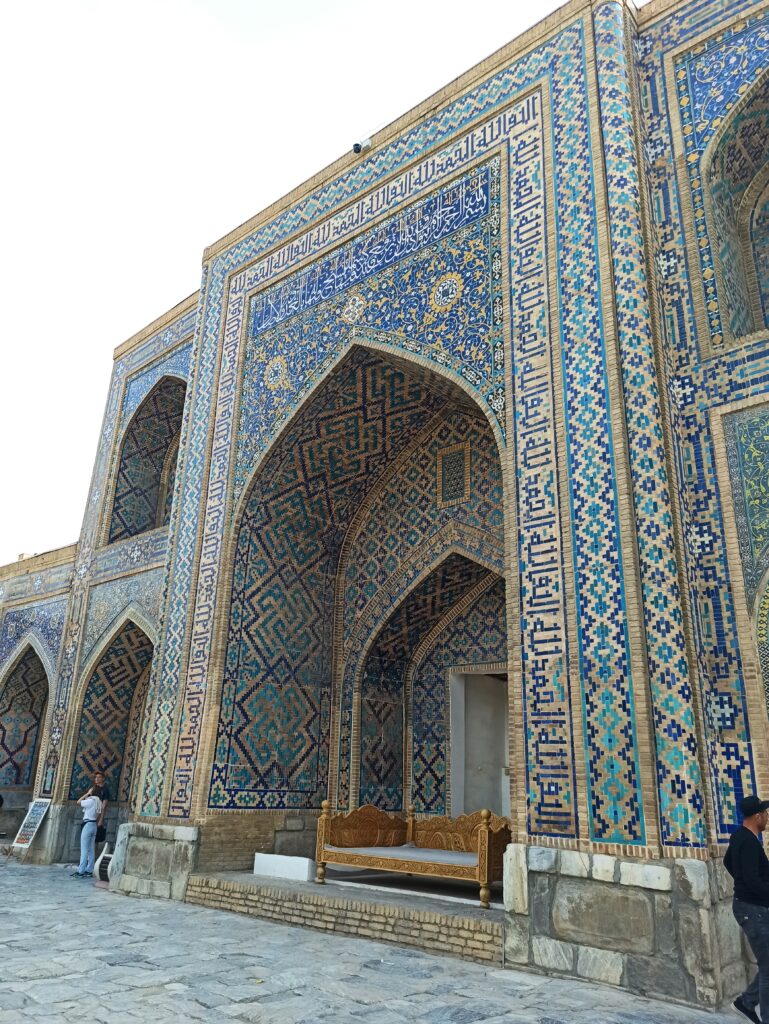
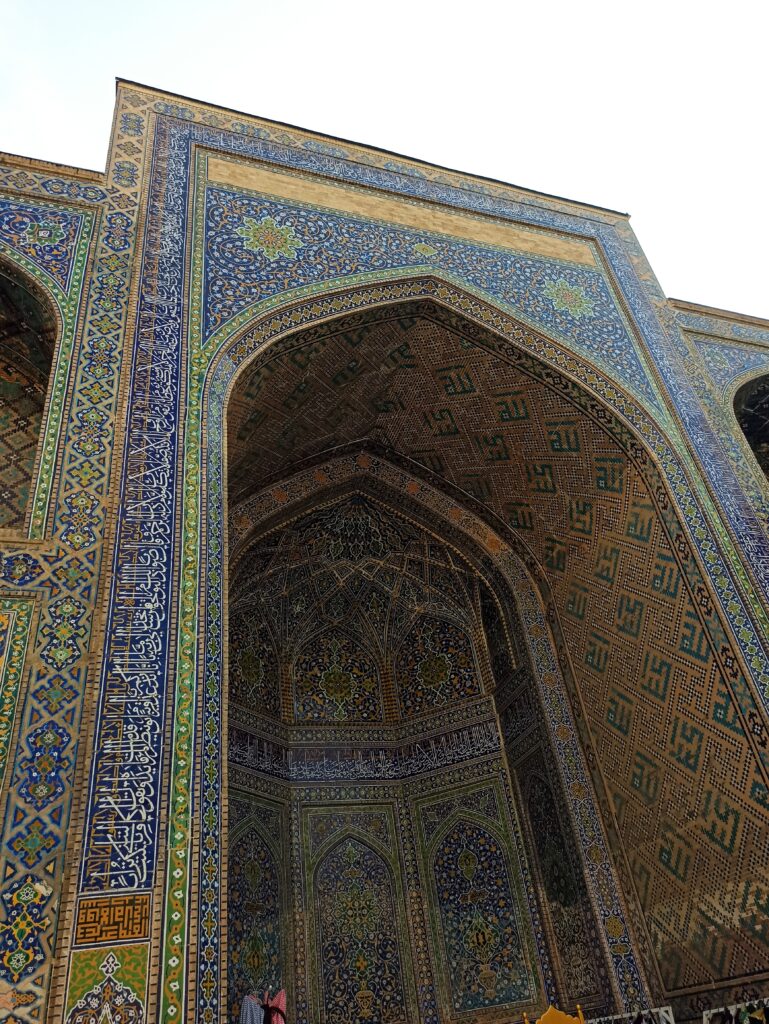
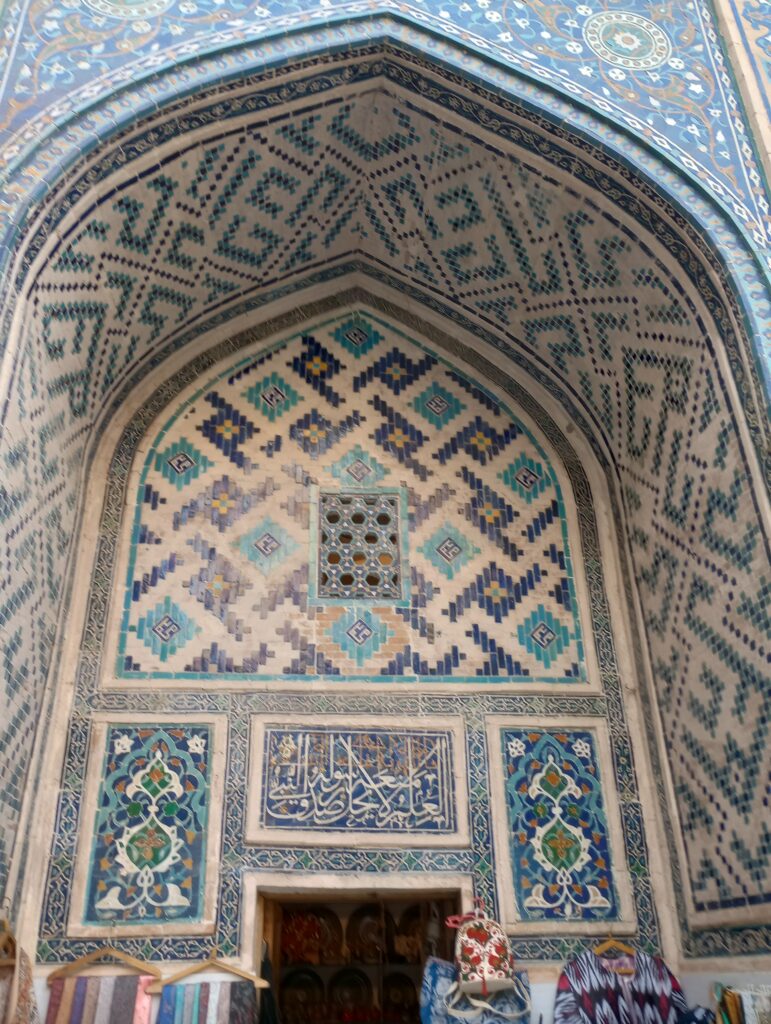
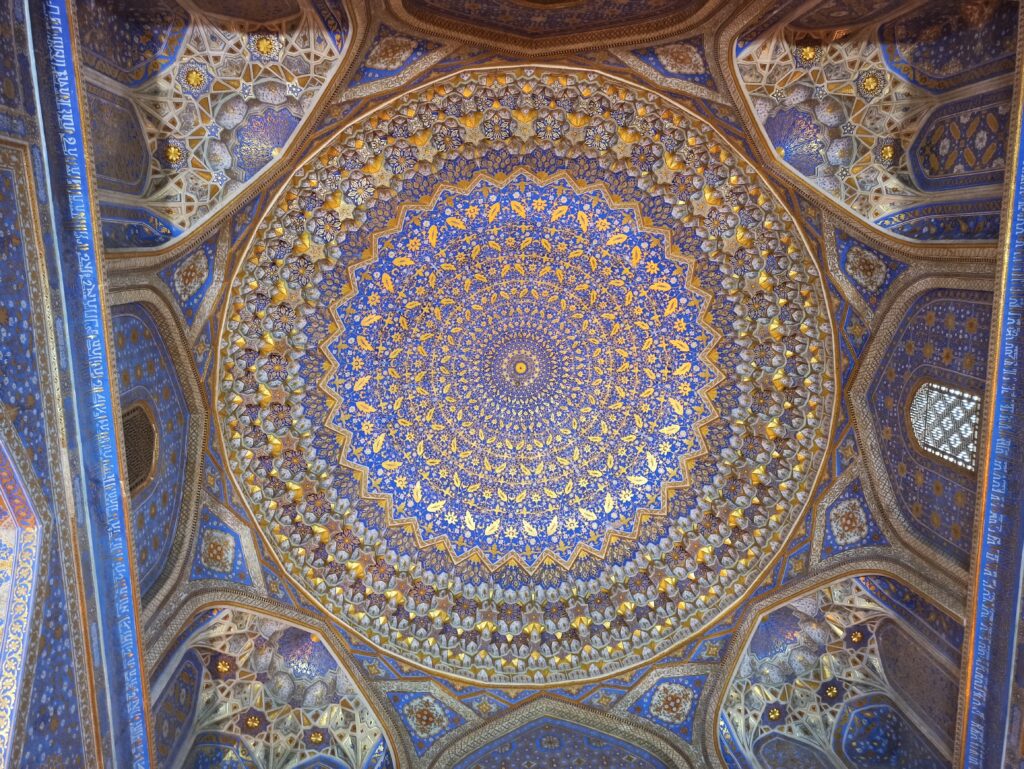
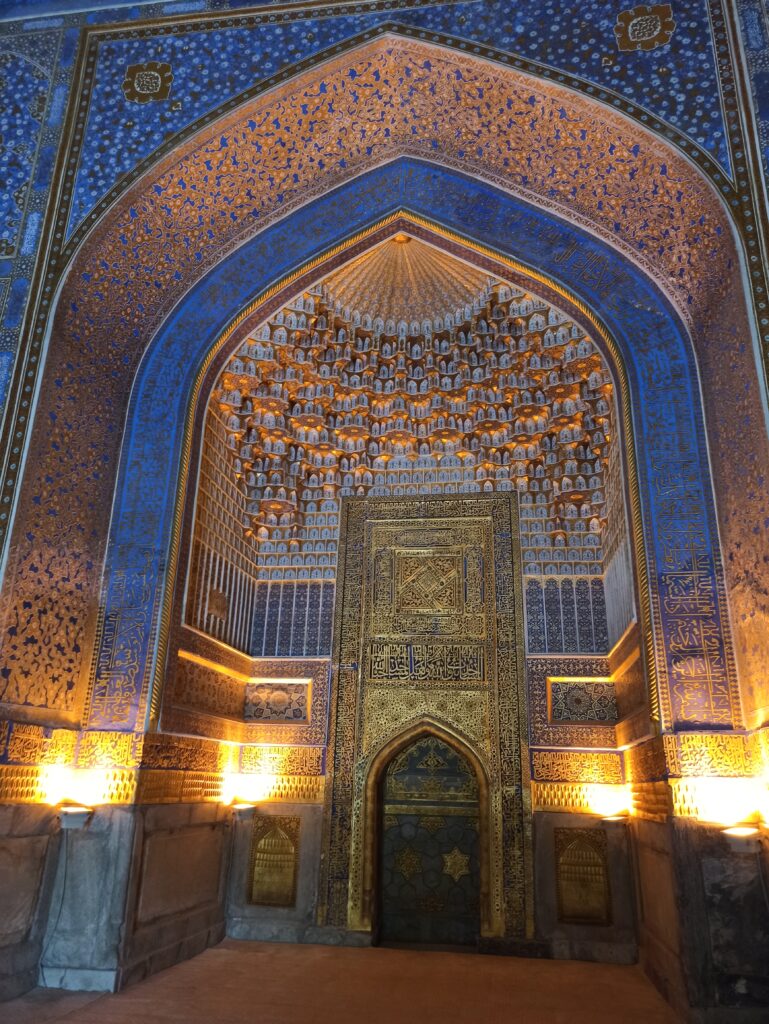
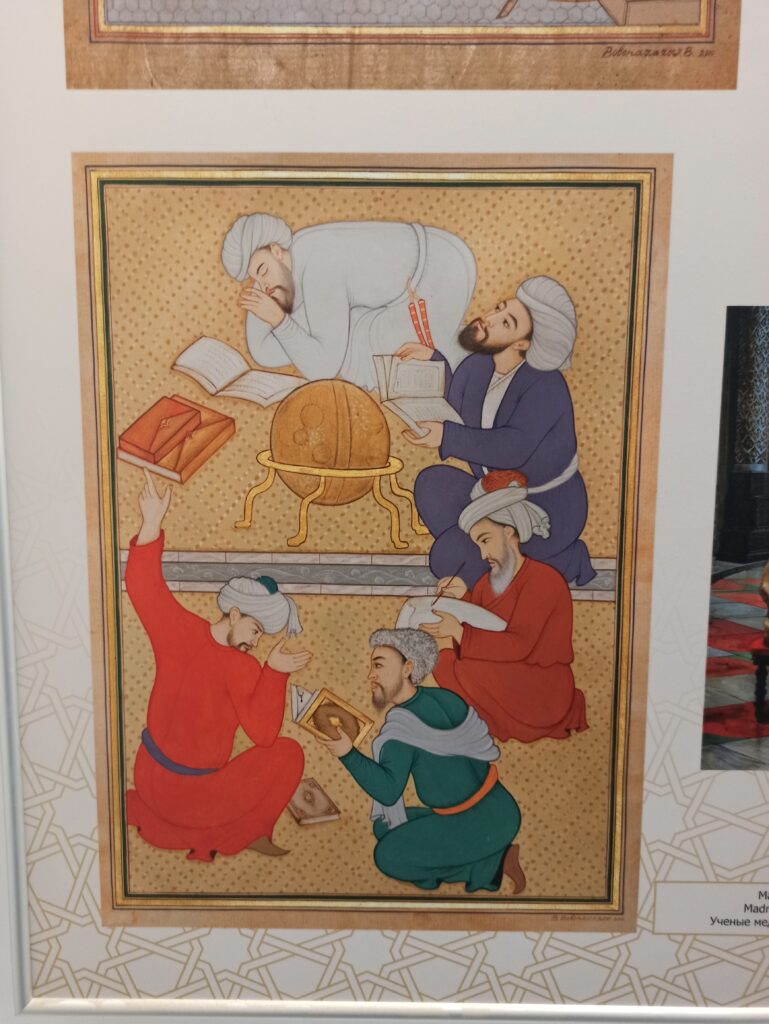
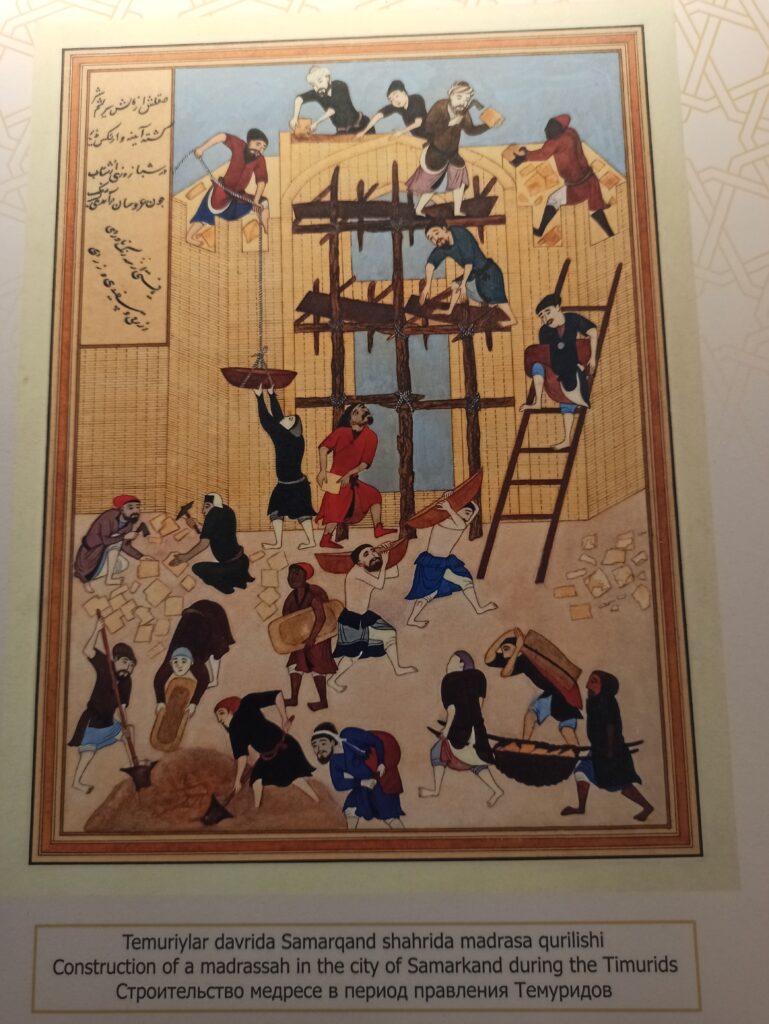
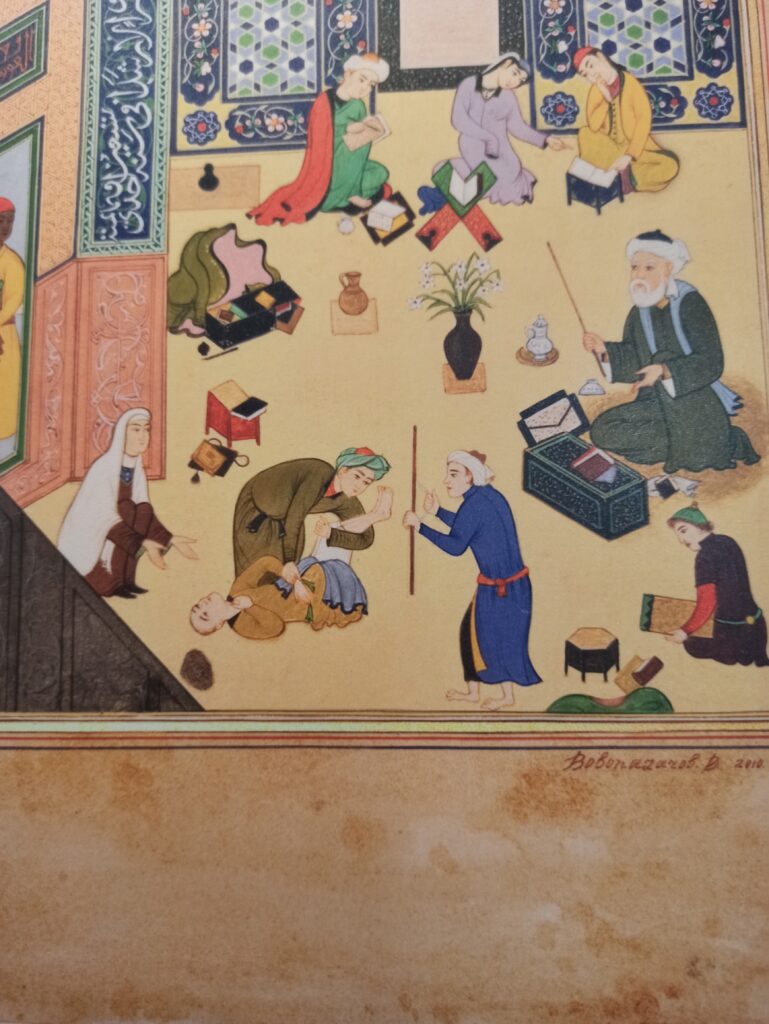
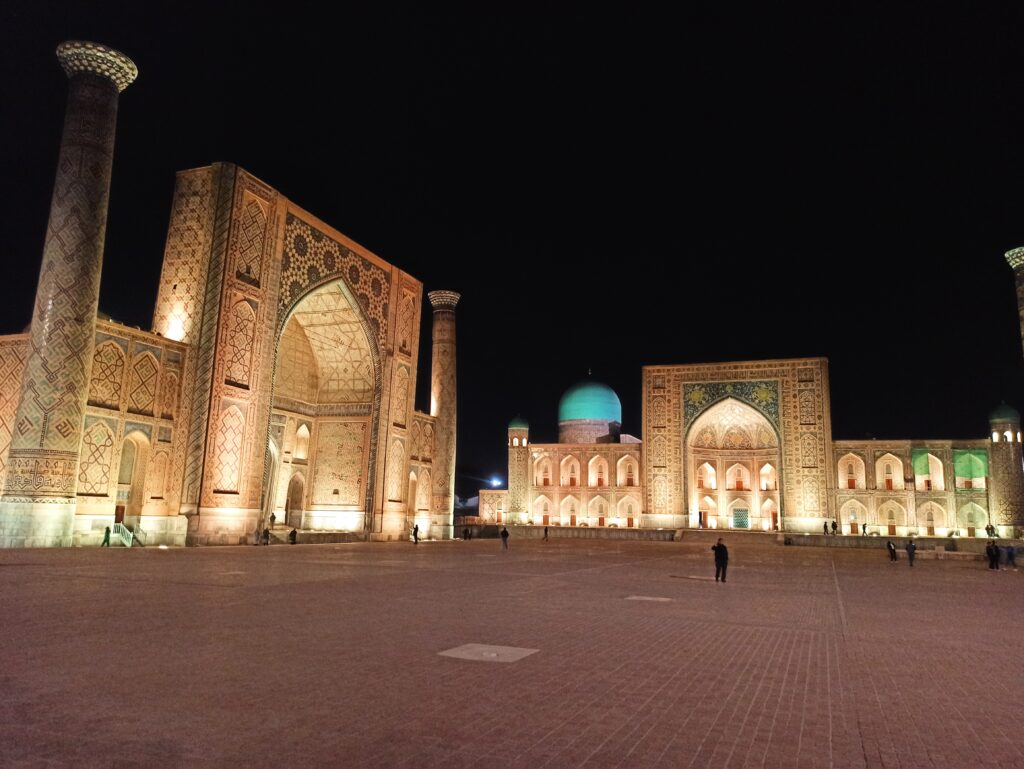
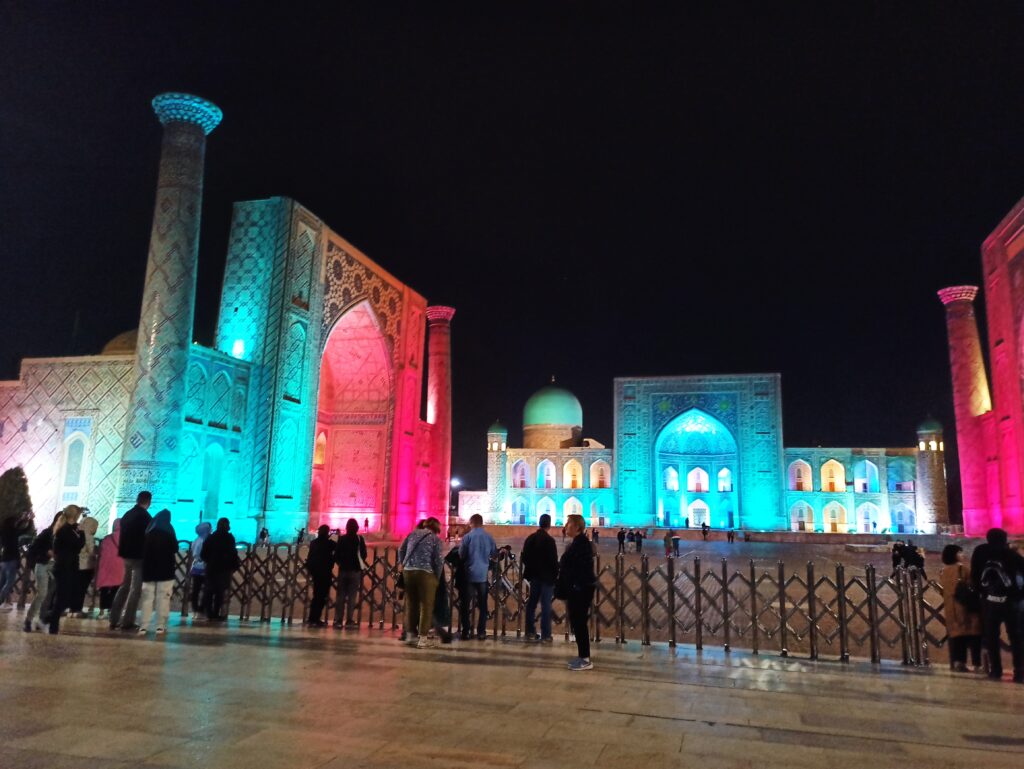
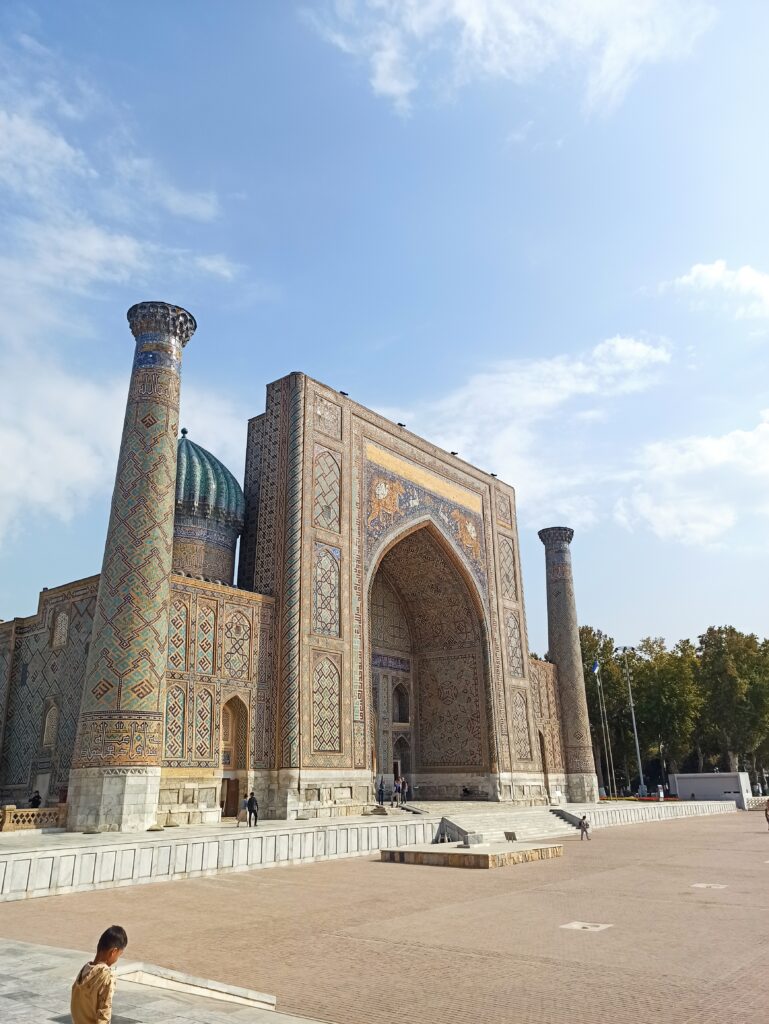
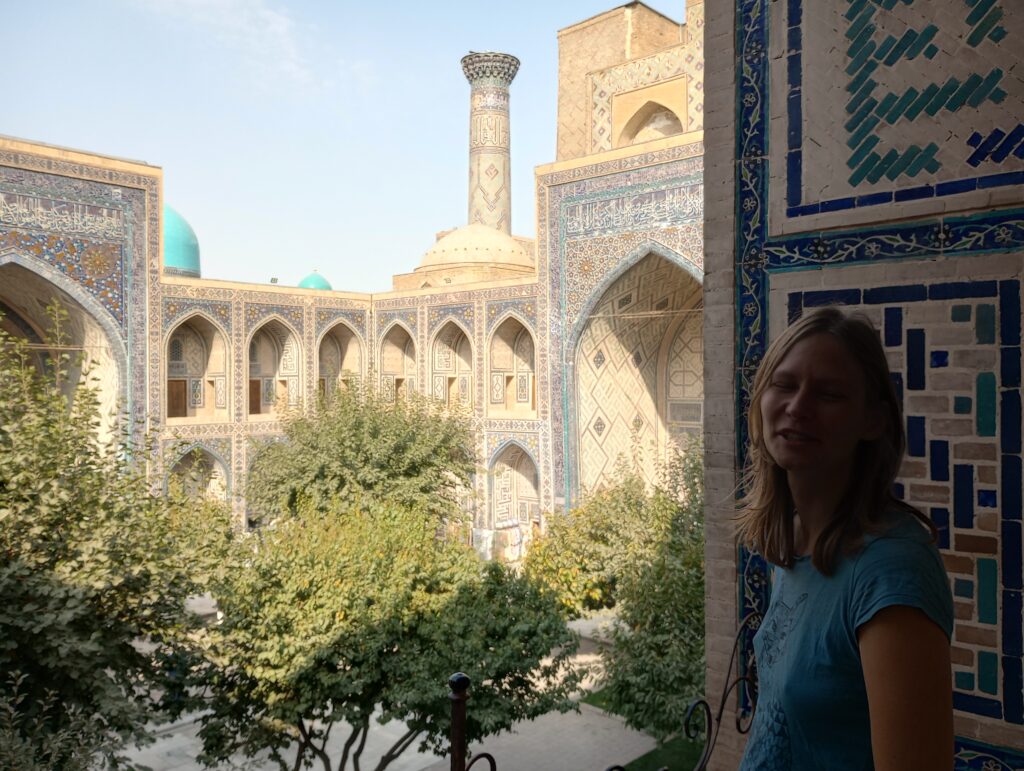
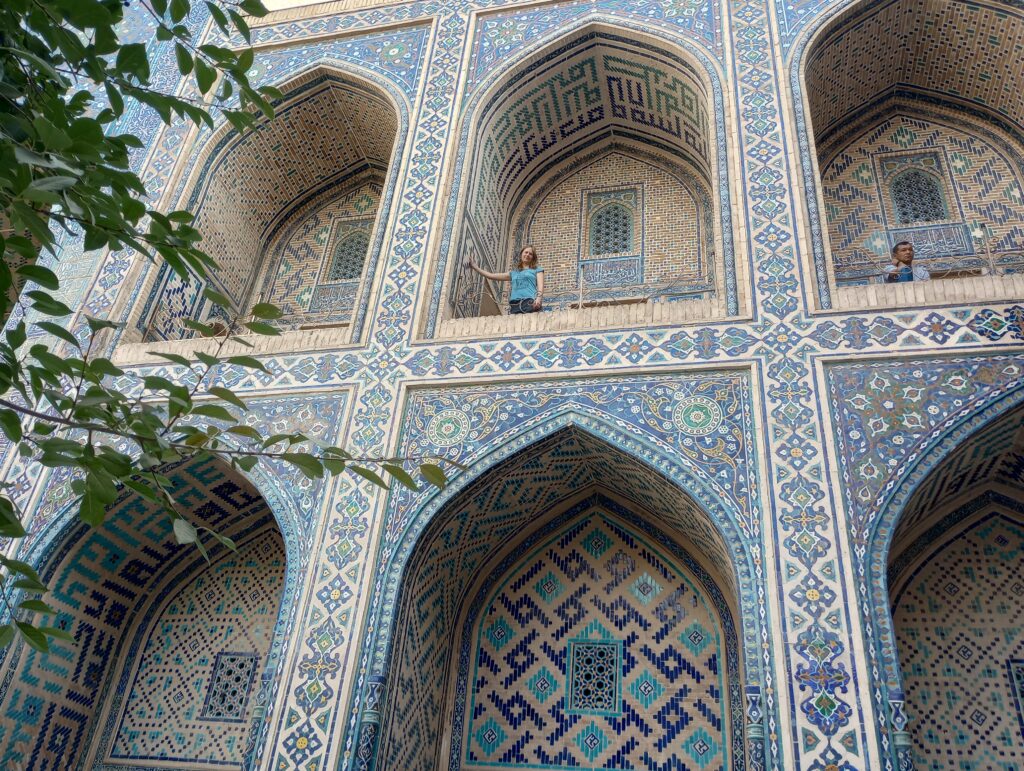
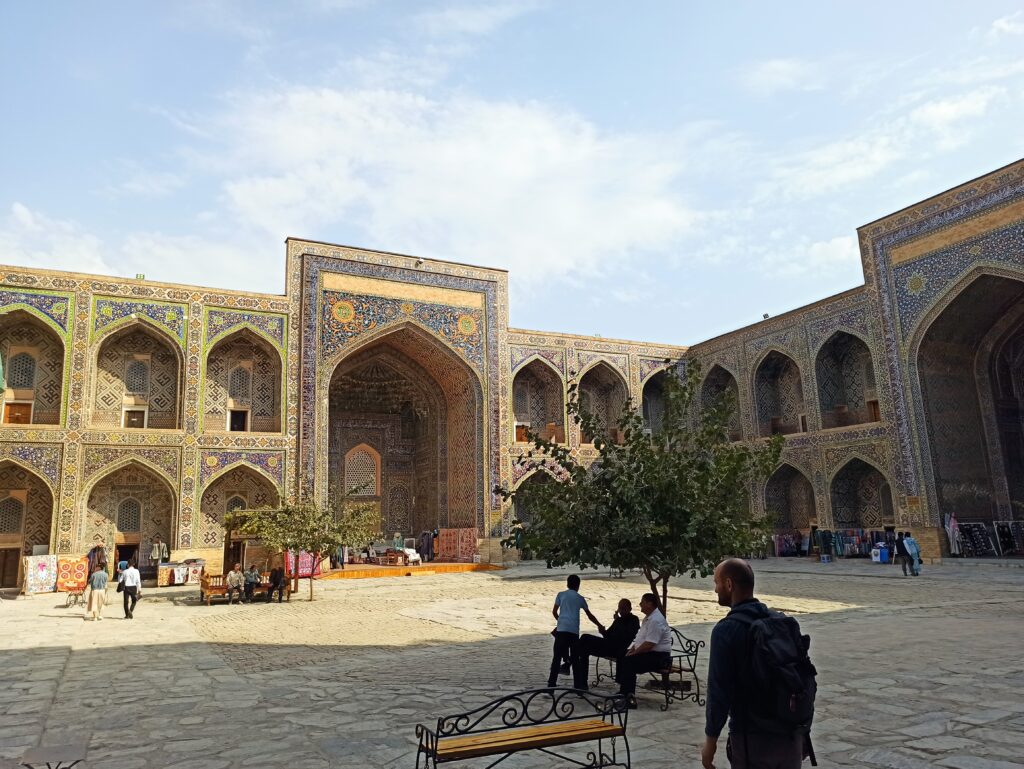
After the madrassas we went to the (still active) cemetary which houses the Shah-i Zinda ensemble – a group of mausoleums. Some from the 15th century. On the way there we made a stop by an impressive 15th century mosque and also came by the mausoleum of Uzbekistan’s first president. It used the same style as Timur’s mausoleum and the madrassas. The whole mausoleum reeks of hubris (it is supposed to be an “holy and eternal” place). We didn’t linger too long and tried to find a route to the Zinda ensemble, as we were not keen to walk next to the main thouroughfare. We followed two Russian women into the graveyard, since they encouraged us and said that yes, this is the way to the Zinda. But this one is for free! That should have been a clue… Well, as it turned out, they planned to skip the ticket office and take the backdoor in. We arrived at a back gate, hip-high, chained shut. The women were already inside, milling about and gesturing futively for us to jumpp in. We hesitated. We’ll leave it up to you to imagine what we decided to do. Either way, the mausoleums were absolutely stunning, full of deep turquiose glaze. Amir timurs familiy was buried here, and remarkably, the biggest mausoleum was dedicated to Timur’s wetnurse.
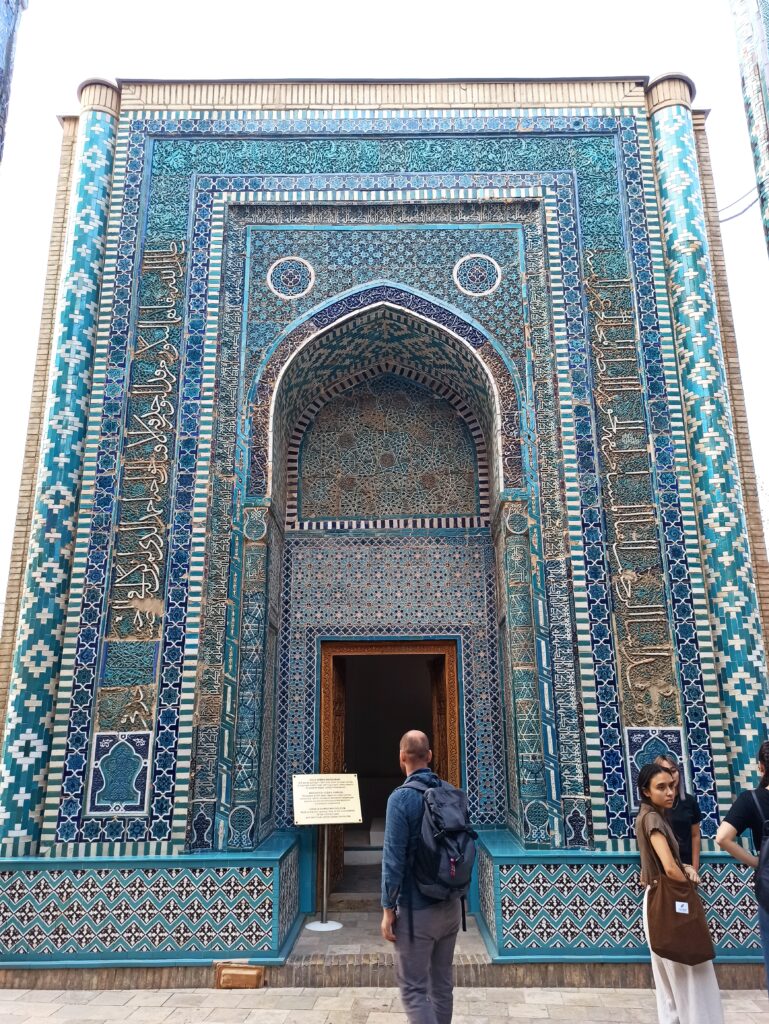
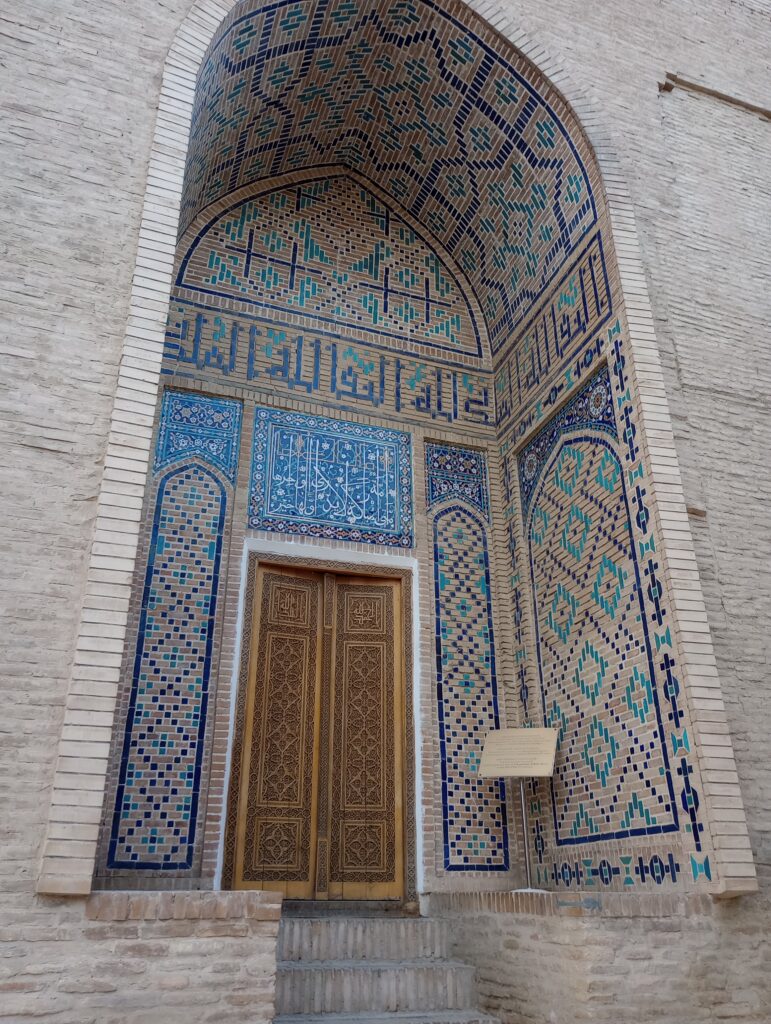
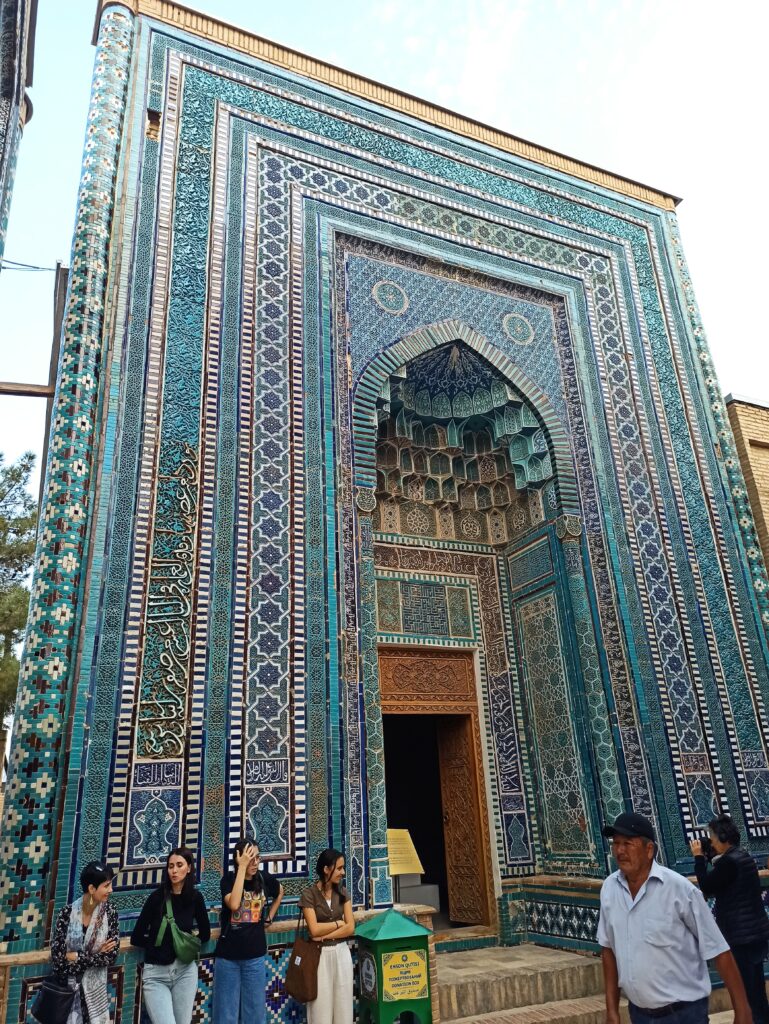
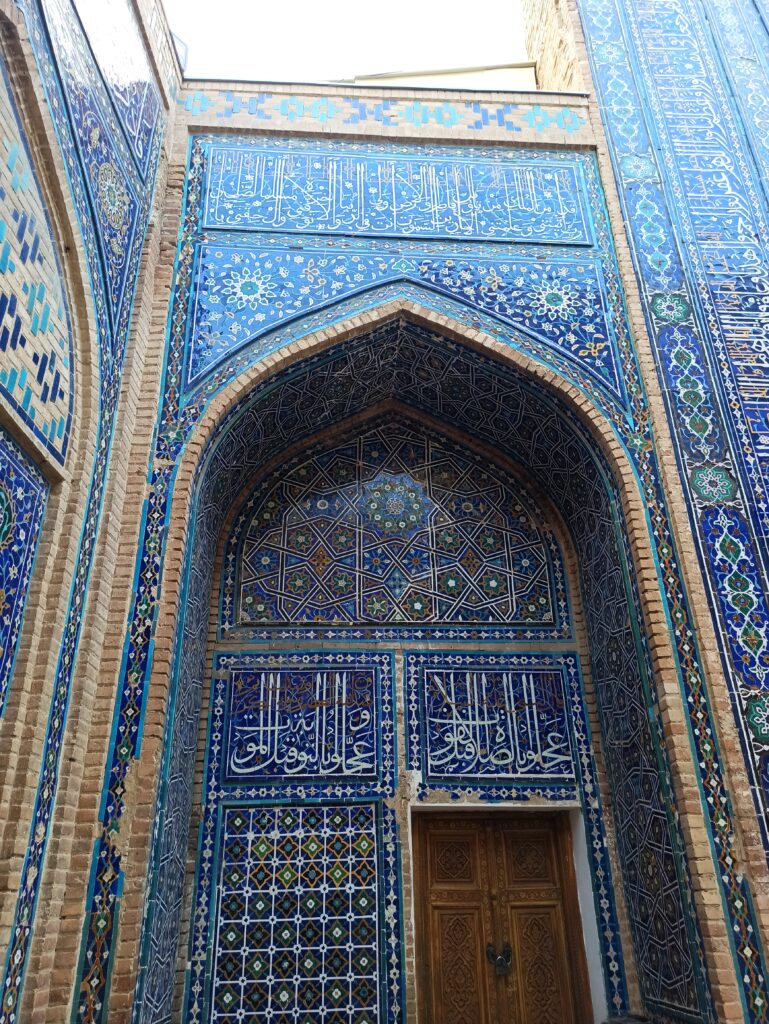
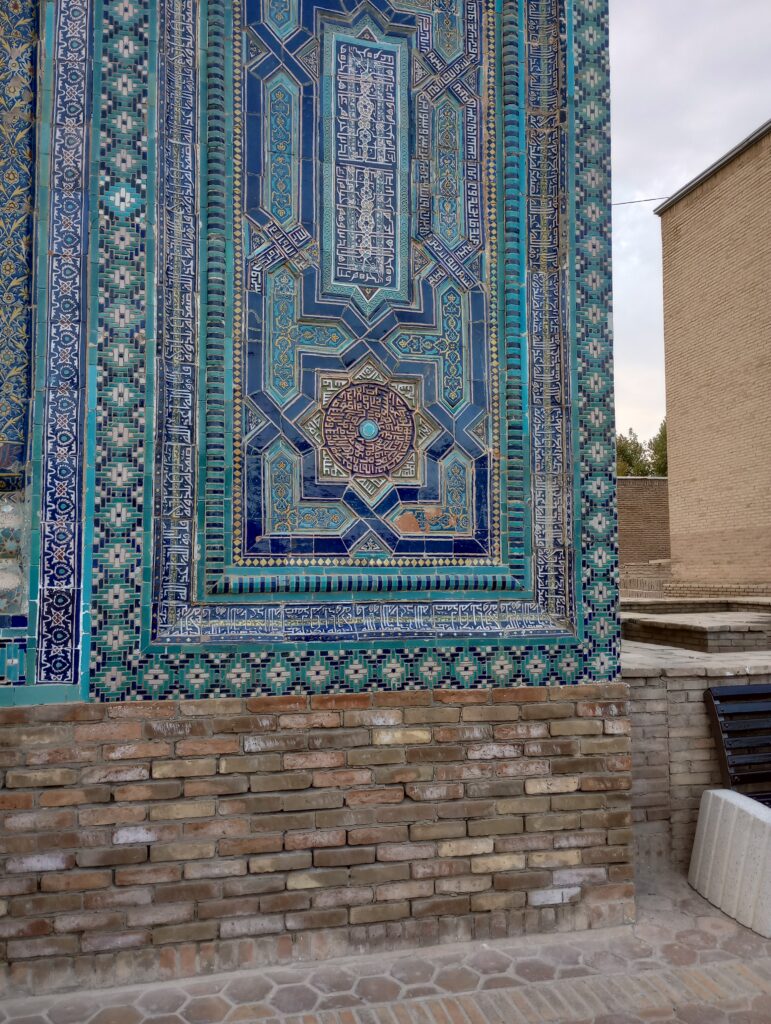
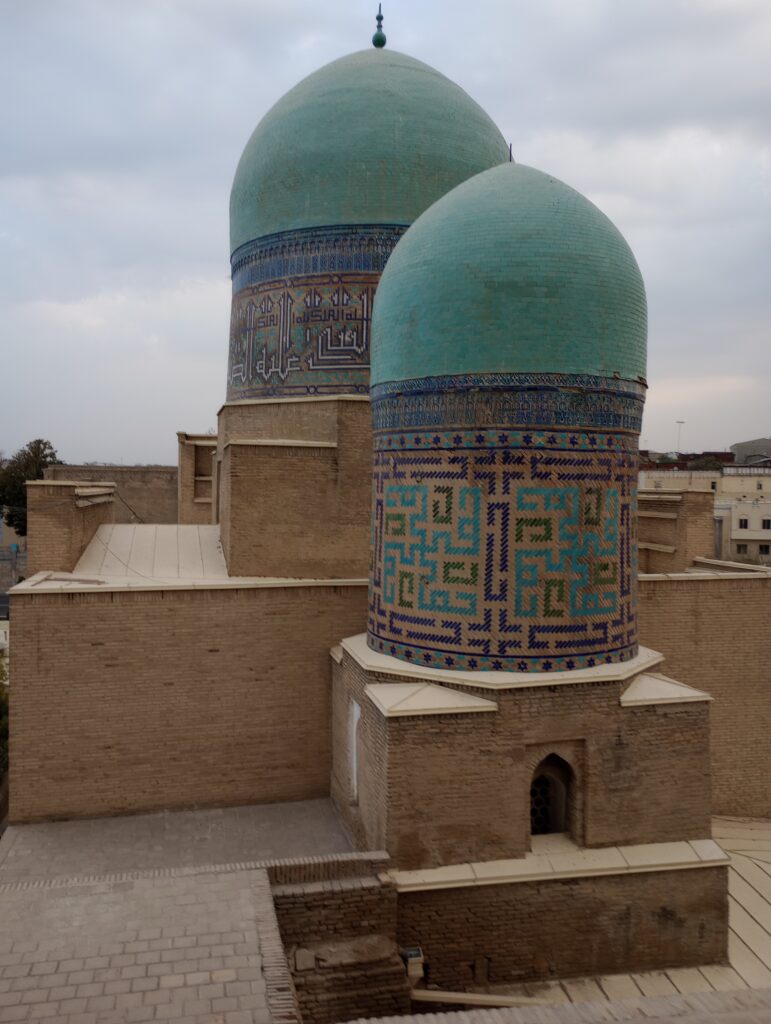
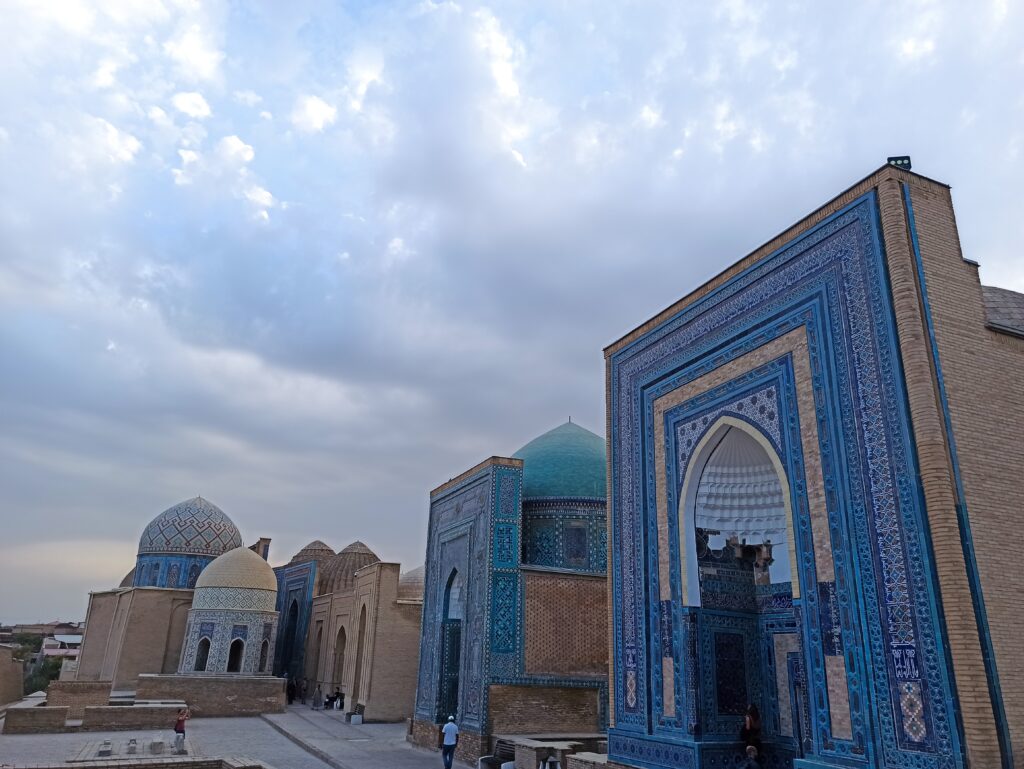
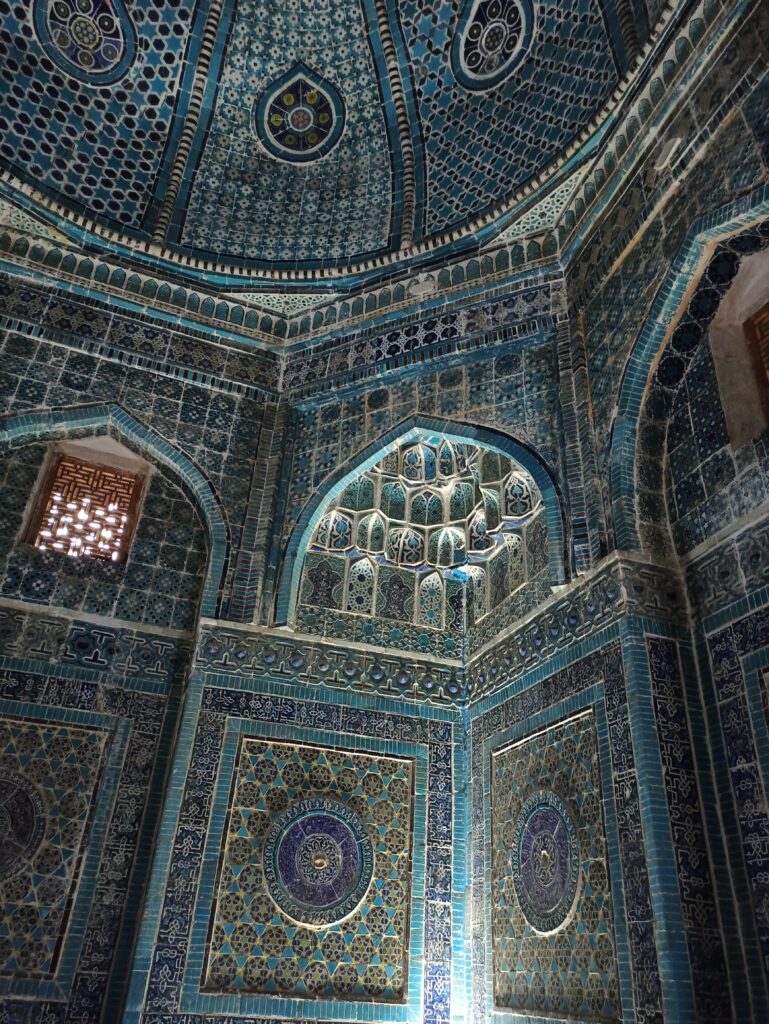
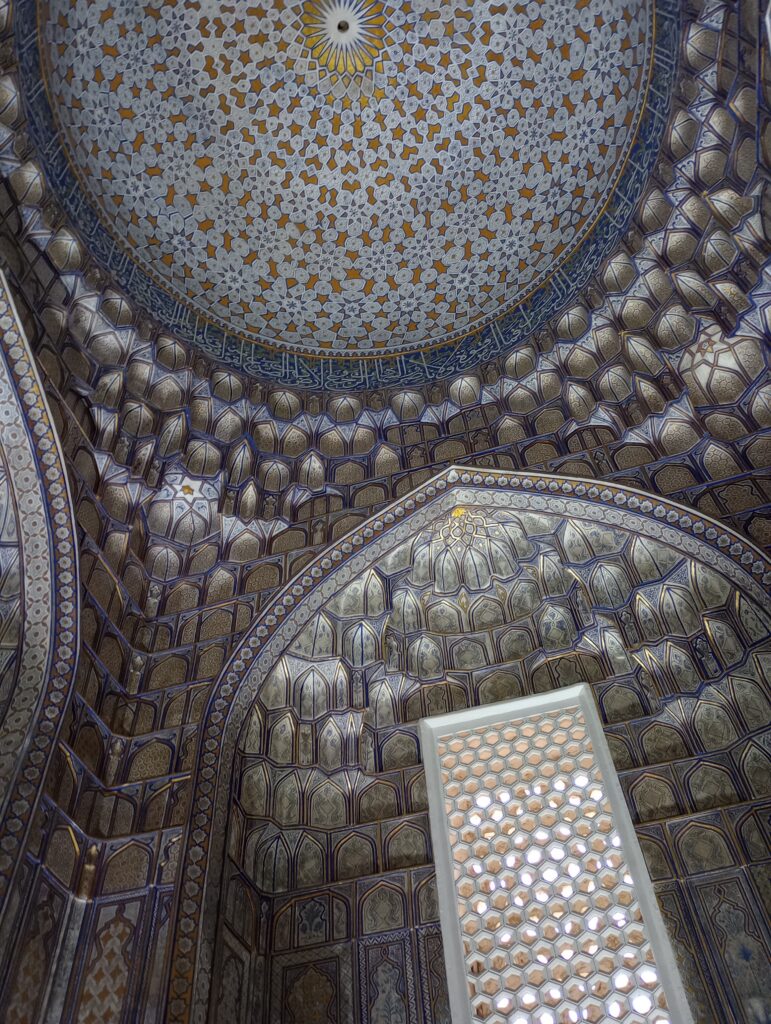
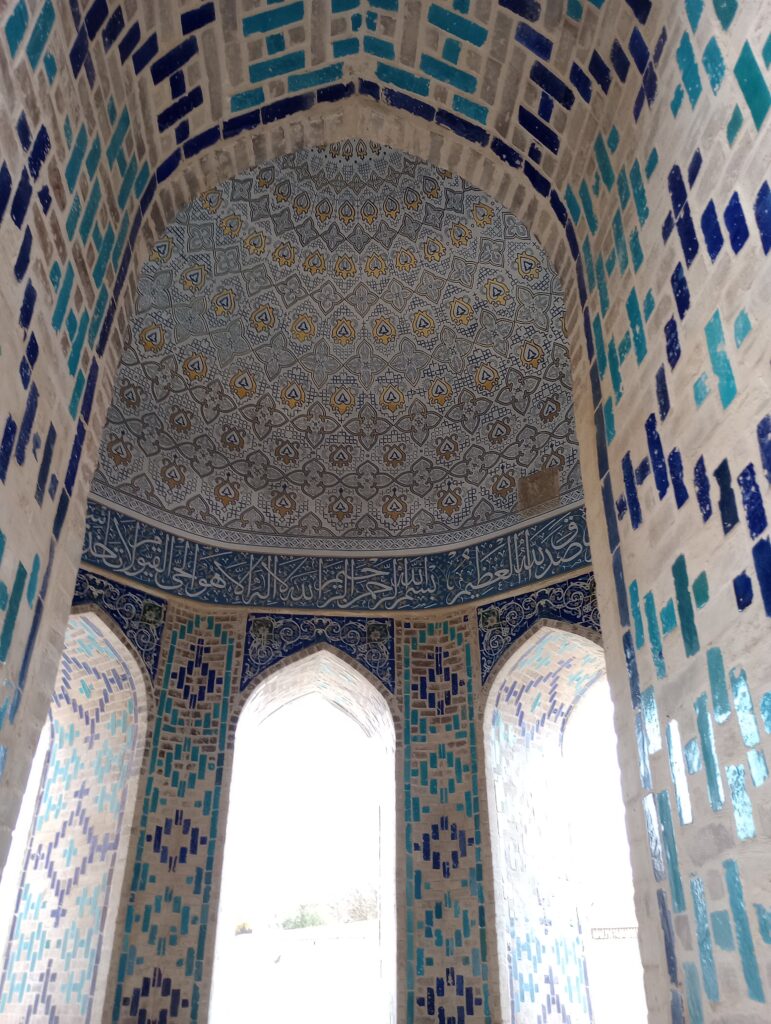
After Samarkand, we had one more stop left: We went further west to Bukhara. We took the train for the first time in Central Asia and it was surprisingly comfortable and easy. Bukhara has the feel of museum rather than a town, with 16th century buildings all over the city. Bukhara hosts as many as 100 madrassas which had once hosted 10 000 students. But there were also old mosques, bazaars, a bathhouse , caravanserais, a prison and a castle. But one of the main attractions was definitely the kitten Olga picked up. We stopped to pet it, as one does, and it promptly sat on Olgas lap. As it showed no signs of wanting to leave, we concluded it obviously needed a taxi service. The cat was perfectly happy being carried around half the city, until about after an hour it decided it had enough of our city tour, and graciously departed. Despite our passenger, we were interviewed (for the third time since we came to Uzbekistan) by Uzbek students. This time, we were asked about our opinions on Uzbek food and culture. Our suspicion is that there is only one paedagogical textbook in Uzbekistan and all the universities use it.
In the evening we did a tour of the castle with a funny guide speaking perfect German with a slight Swabian accent. Being surounded by that many ancient building gets old eventually, so we were very happy to see that some other tourists had arrived in our hostel. It was a young couple and the guy and I were sure that we knew each other. It took about 10 minutes, but finally we figured out where we had met each other- in Duschanbe, on the first weekend in Central Asia, almost 2 months ago. They are Arno and Charlotte, a lovely couple about our age, on a year-long cycling trip through Central Asia. While we were doing our thing, they had spent their time cycling through the Pamir in Tajikstan. We spent a very pleasant evening talking and trading stories.
